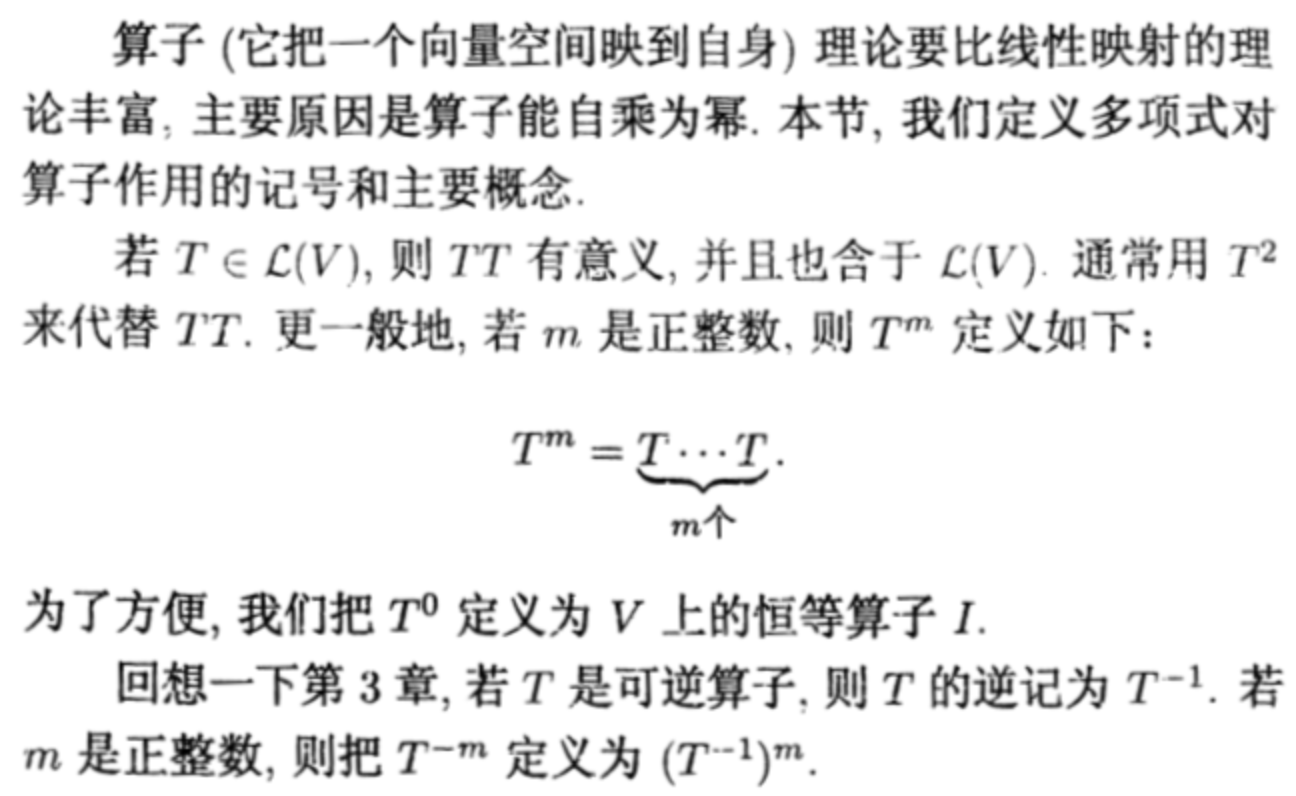Linear Algebra Course Slides Notes
1. space
Note: figure of different spaces

Note: brief intro to various spaces

1.1. vector space (linear space)
Def: vector space ( V on F )


Note:

Example:

Qua: => qualities

Qua: => only one adding element

Qua: => only one adding invert

Qua: =>0v=0

Qua: => ao=0

Qua: => (-1)v = -v

1.1.1. subspace & sum (直和)
1.1.1.1. subspace
Def: subspace

Qua: 3 conditions =>

Note:

Qua: => finite

Qua: => dimension

Qua: => dimension

1.1.1.2. sum
Def: sum

Def: direct sum

Qua: necc & suff (multiple)

Qua: necc & suff (2 subspace)

Qua: finite =>

Qua: dimentiosn =>

1.1.2. linear combination & span
1.1.2.1. linear combination
Def: linear combination

Qua: necc & suff

Qua: necc & duff

Corollary:

Qua: necc & suff

Qua: => rank

1.1.2.2. span
Def: span

Def: be spanned by

1.1.2.3. linear independent
Def: linear independent

Theorm: necc & suff of dependent

Theorm: rank =>

Lemma : => span

Theorm: => length

Def: largest indepent group

1.1.3. basis
Def: basis


Qua: necc & suff

Qua: every spanned group =>

Corollary: every finite space =>

- Qua: every independent =>

Qua: every length spanned group =>

Qua: every length independent =>

Def: dimension

Qua: finite =>

Theorm: for map-space dimension =>

Theorm: subspace dim =>

Corollary: => no dandi

Corollary: => no mandi

Corollary: => no solution

Theorm: => relationship with matrix rank


1.1.3.1. othonomal basis
Def: othonomal

Qua: => independent


Def: othonomal basis

Qua: Gram-Schmdt convert to otho =>

Algorithm:
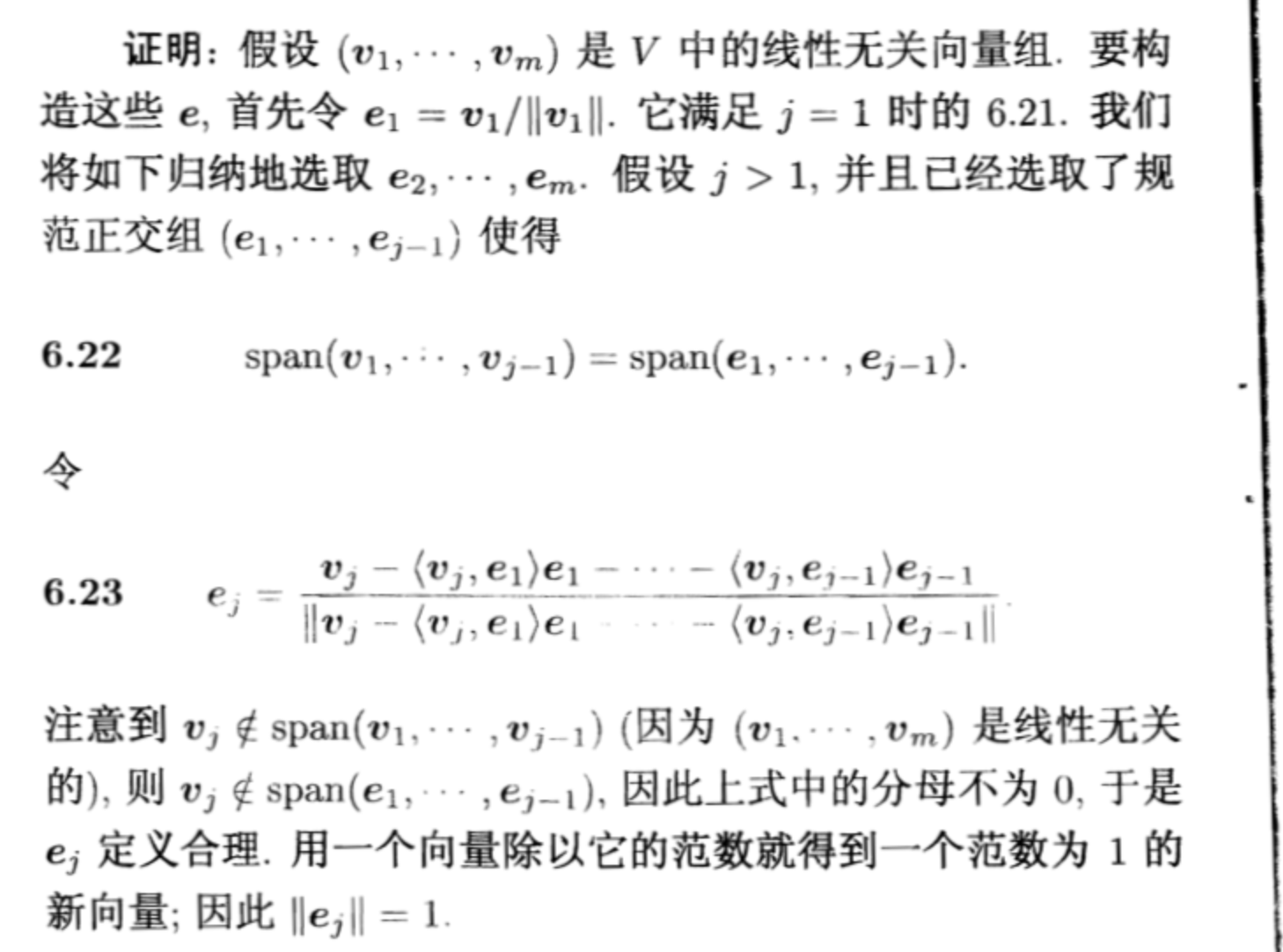 adjoint
adjoint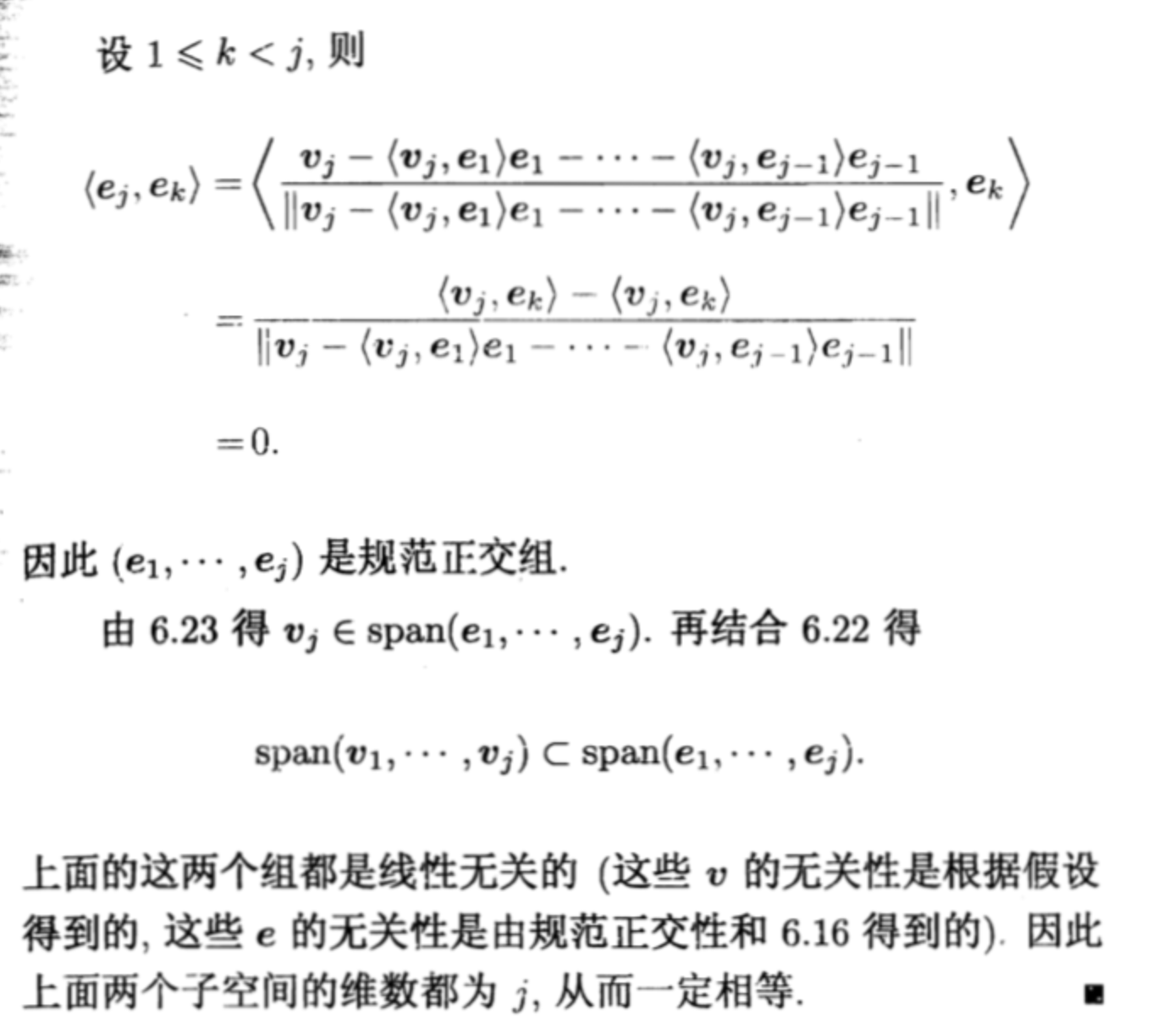
Qua: => xxx

1.2. metric space
Def: distance space

1.2.1. separable
Def: separable

Lemma: separa => Borel = Borel0

Def: Borel set

Def: Borel 0 set

Def: measurable map

Qua: necc & suff

Def: projection map

Note

Def: RCLL function

Note:

Qua: some statements

1.3. inner product space
1.3.1. inner product
Def: inner product:The inner product operator measures the similarity between vectors

Example: very important, we see f, g as very long vectors(infinite), and <f, g> is basiclly the sum of infinite vectors.

Example: very important example here, fourier function
define infinite basis functions

prove that basis function are orthogonal

any f can be written as linear combination of basis functions (proof: using orthogonal)

compute coefficient : use orthogonal


Qua: necc & suff

Qua: => quality


Qua: => quality


Def: orthogonal

1.3.2. norm
Def: norm

Def: norm

Qua: necc & suff

Theorm: => Cauchy-Schwarz Inqueality

Theorm: Triangle inequality

Theorm: Parallelogram inequality

Theorm: Pythangorean

1.3.3. inner product space
Def: inner product space

Example:


Qua: => T=0

Qua: => continuous

1.3.4. orthogonal complement
Def: orthogonal complement

Qua: => V=a+b

Corollary: => invertable

Def: orthogonal projection

Qua: => qualities

Qua: => norms

1.3.5. linear functional & adjoint
Def: linaer funcitonal

Qua: =>

Def: adjoint

Qua: =>
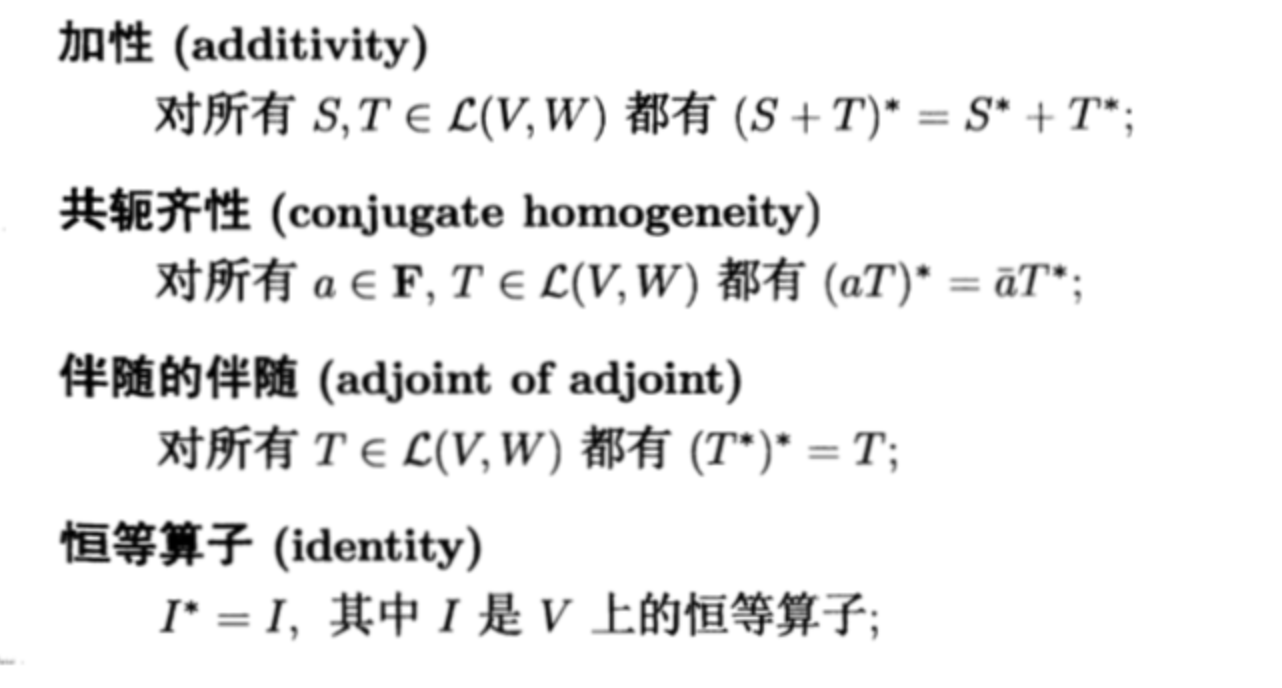

Qua: =>

Qua: =>??

1.3.6. self-adjoint function & normal function
Def: self-adjoint function

Qua: necc & suff

Qua: => egenvalue

Qua: => T = 0

Def: normal function

Qua: necc & suff

Qua: => egenvalue

Corollary:

1.3.6.1. complex space
- Theorm: complex spectral theorm, necc & duff
 - Corollary: => invertible
- Corollary: => invertible
Corollary: => egvalue

1.3.6.2. real space
Theorm: real special thoemr, necc & suff

Qua: => direct sum

Theorm: necc & duff of [norm but not self]

Theorm: necc & suff of norm

Theorm: necc & suff of norm

1.3.6.3. positive function
Def:positive function

Theorm: necc & suff

Theorm: => root

Def: square root

1.3.6.4. isometry function
Def: isometry

Qua: necc & suff
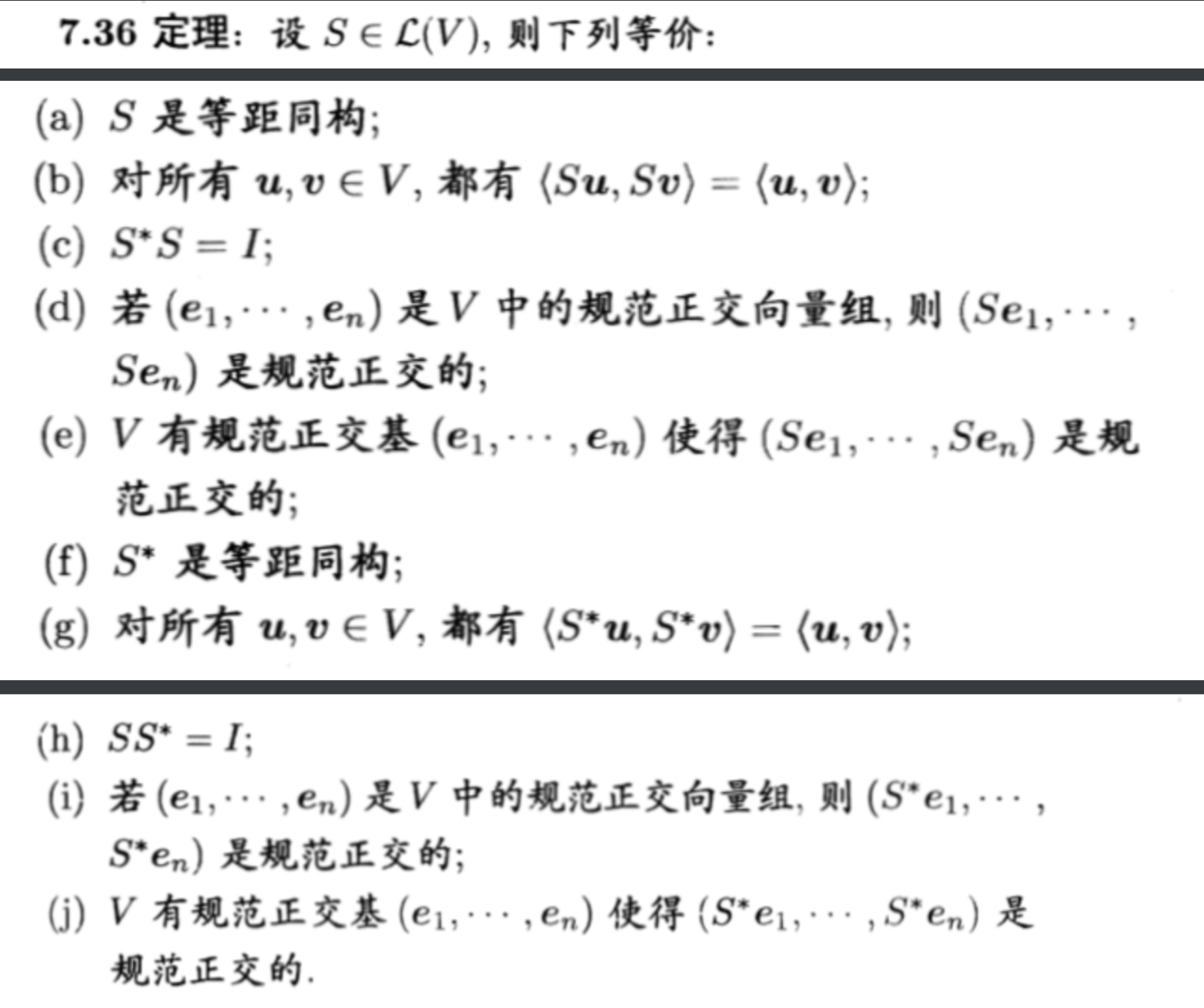
Qua: necc & suff

Qua: necc & suff
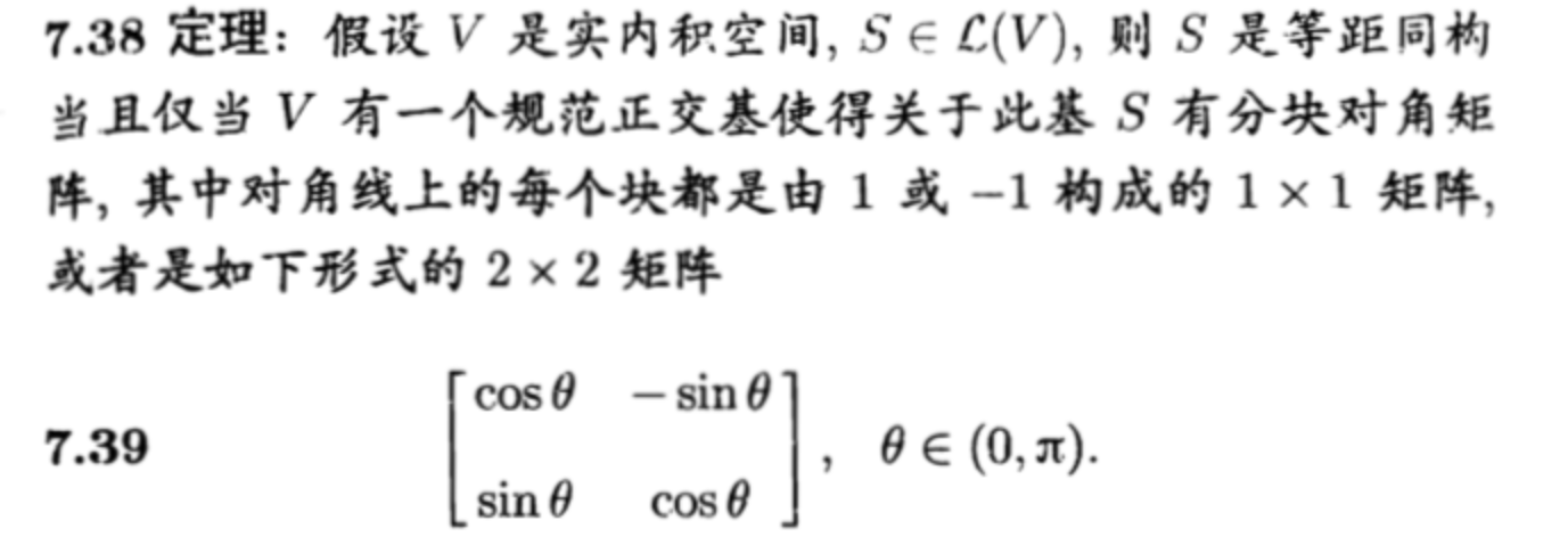
Theorm: polar decomposition

Def: singular value

Theorm: => singular value decomposition

1.4. hilbert space
Def: hilbert space

Def: complete space

Example: of hibert space

1.4.1. kernel (1-8 & web)
Def: kernel (1-8)

Def: kernel (web)

Example:

Def: kernel
defiinition 3: web

Example: of \(\phi\)

Qua: => quality of kernels

Proof:

Operation: (1-9), below are all kernels.



Operation: (web)




1.4.2. reproducing kernel hilbert space (1-8 & web)
Def: reproducing kernel hilbert space ( web )
rkhp is a hilbert space with reproducing property, which the basis eigen function form the basis of it . Given kernel function-X space, we can get eigen basis-rkhp( - means that it is one on one); it may be confusing that hilbert space can be function space / vector space , but here we only consider function space.

Theorem: Mercer theorem(web), kernel related to X space, eigenfunc/vec related to L(x) function space. kernel function can be expressed in combinition of eigen functions.

Proof:
from eigen value, get the following (see K(x,y) as infinite matrix, x implies column, y is row.

prove orthogonal, them we can use eigen decomp to prove the theorem.

Def: reproducing property (web)
for this type of inner product, we have reproducing property


Proof:
present f as combinition of eig functions

s from mercy theorem, we get (there should be a T at the end)

therefore, from definition, we get

Def: kernel trick( web)
now that we have get kernel-X and eigen function-rkhp, we define a rkhp-mapping: \(\phi(x)\) is a function X-> H, K(x, .) may seem confusing but it is a function from X-> H as well, the dot means that the place

then we get

Example: in this example, \(\phi(x)\) is the coordinate of feature space(which is a function hilbert space), there should be a H at the end of \((x1, x2, x1x2)^{T}_{H}\); the function space basis functions are:\(\psi _{1}(.) = e1(.)\), \(\psi _{2}(.)=e1(.)\) , \(\psi3(.)=e1(.)*e2(.)\), but we do not need to know the exact hilbert space it is projected to in most cases.

Def: reproducing kernel hilbert space (1-8)
this is the same. rkhs is here have to be a function space(X->R), which every element satisfy reproducing property.

Def: reproducing kernel hilbert space (1-8)
same thing .

Def: kernel trick (1-8)
kernel(x, y) = <\(\phi(x)\), \(\phi(y)\) >, very important stuff here!!

Proof:
the thing here is different from web version. we change hilbert space basis function to k(., xi), \(i=1...n\), I imagine that this is merely a change of basis. \(\phi(x):X\to R ^{X}( R^X\text{ means function from X to R} )\)

Theorem: Mercer theorem(1-8)
Usage: we can get something more from this version. we can approximate \(\phi\) by a finite dimensional map.

Proof: none
Note: 这个是mercy定理的直观证明:


Example: SVM

1.4.3. representing therom (1-9)
Theorm: representer, which shows that even in an infinite dimensional reproducing kernel Hilbert space, the minimizer f∗ can be repre- sented as an (at most) n-dimensional linear combination of kernel functions.
Usage: We can generalize this and prove a simple but powerful theorem called the “Representer Theorem,” which shows that even in an infinite dimensional reproducing kernel Hilbert space, the minimizer f∗ can be repre- sented as an (at most) n-dimensional linear combination of kernel functions.

Proof:


Def: translation-invariant kernel


Example: fourier expansion, we define a invariant k(x), then we see what the original kernel is.


1.5. measure space
see measure theory
1.5.1. L2 space
Def: L2 space (2-4) function space

1.5.2. Lp space
Def: Lp function space
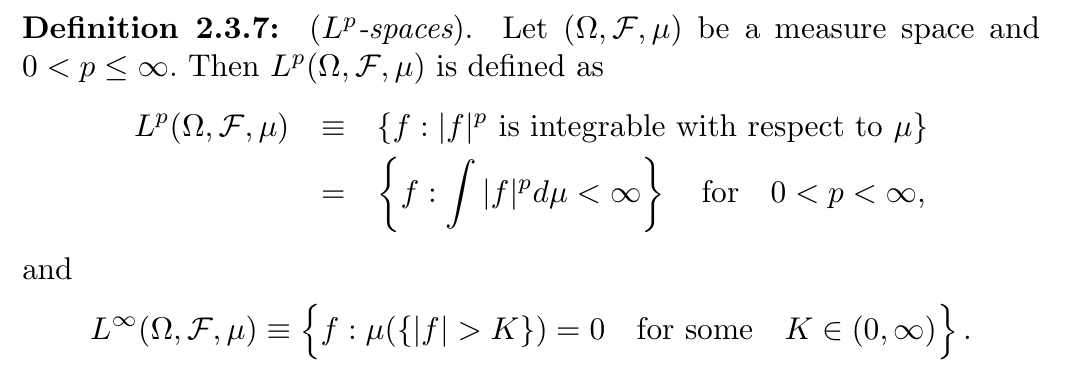
2. linear map
Def: linear map
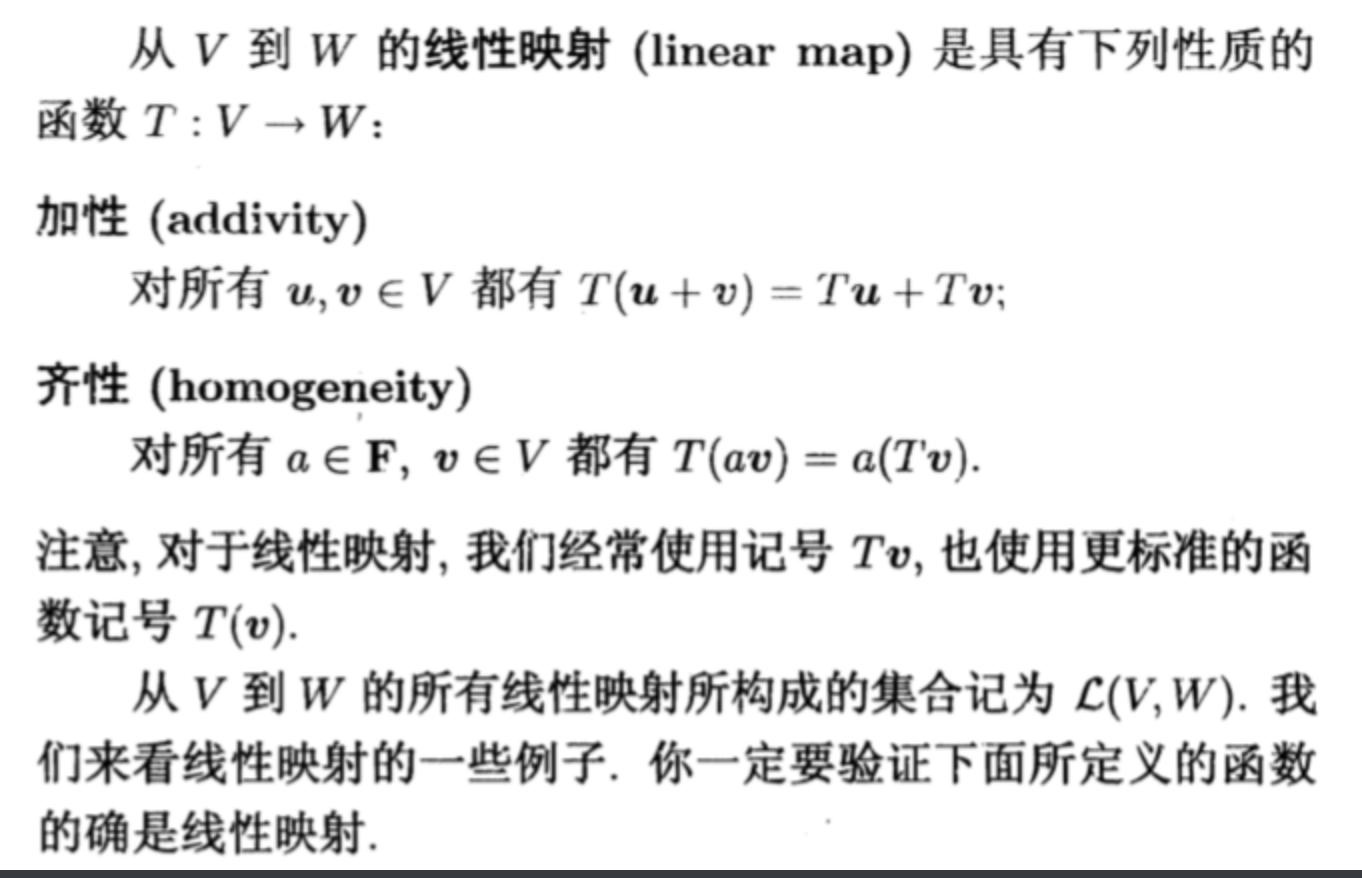
2


Qua: => qualities
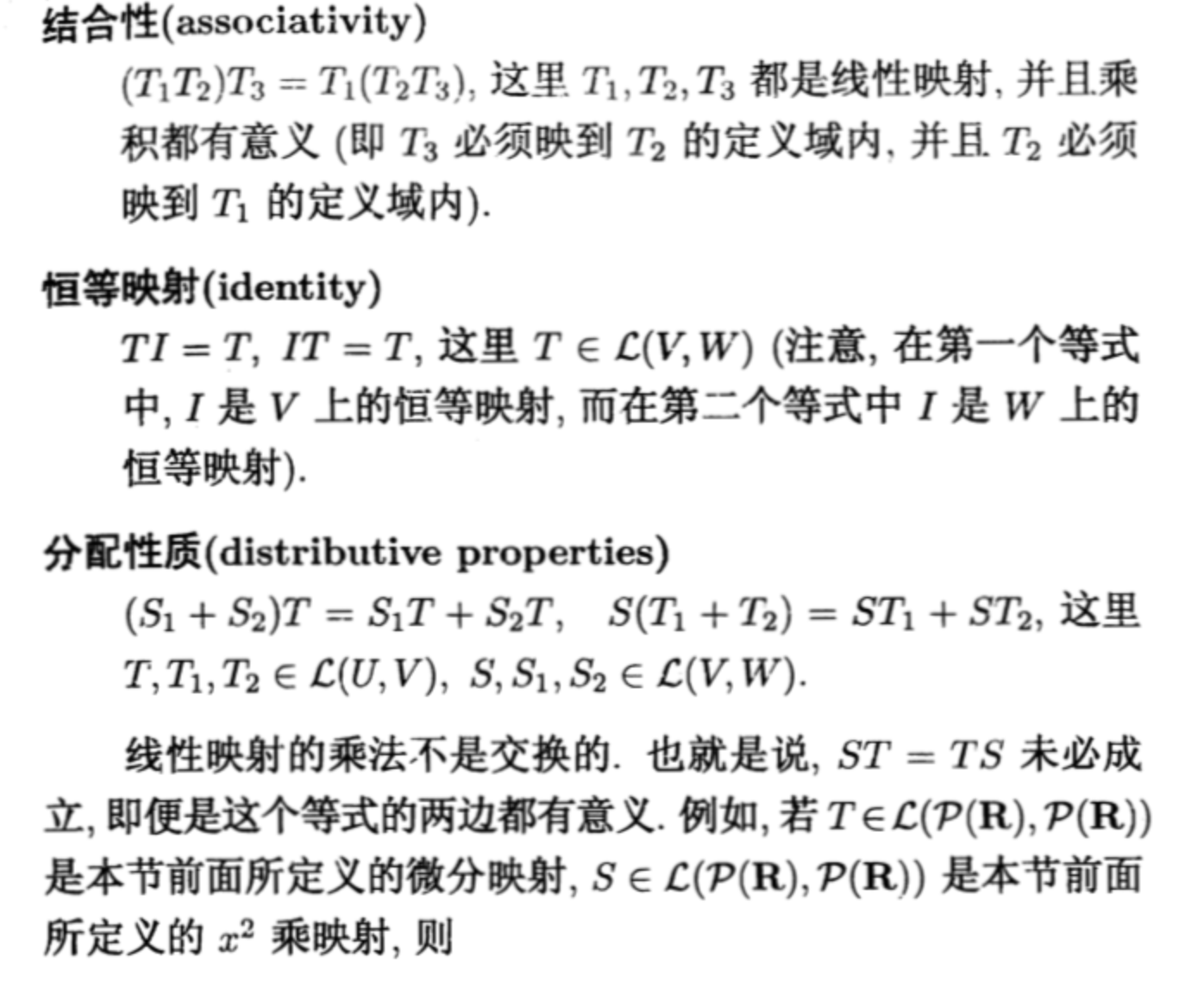
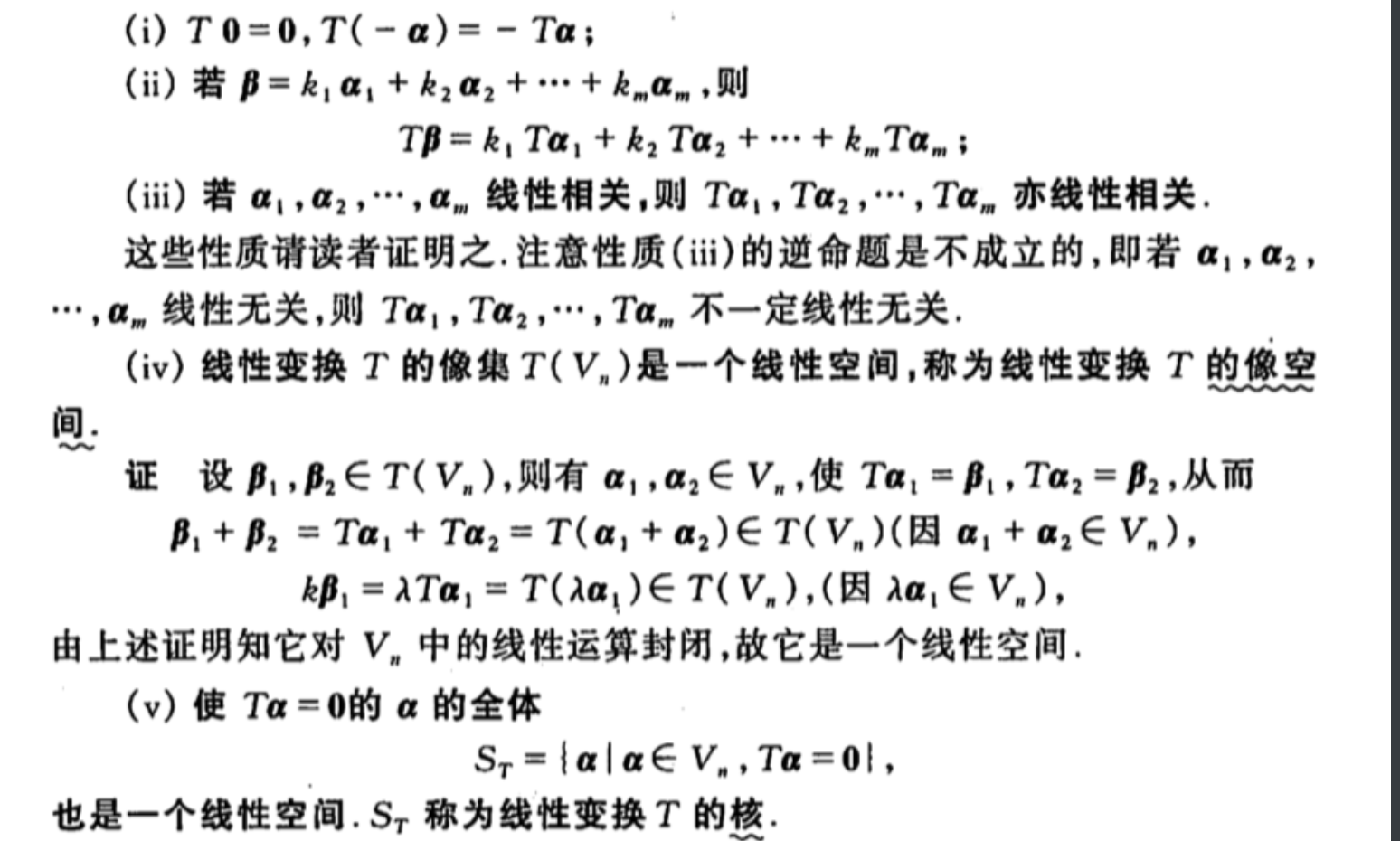
Qua: => dimension

Def: injective, (单射,两个变量不能得到同一个结果)

Def: surjective , (漫射,值域被完全覆盖)

Def: orthotal map

2.1. null space & range
2.1.1. null space
Def: null space

Qua: necc & suff

Qua: => subspace

2.1.2. range space
Def: range space

Qua: => subspace

2.2. matrix
2.2.1. matrix properties
2.2.1.1. basic
Def: from V(n) -> W(m) = m x n
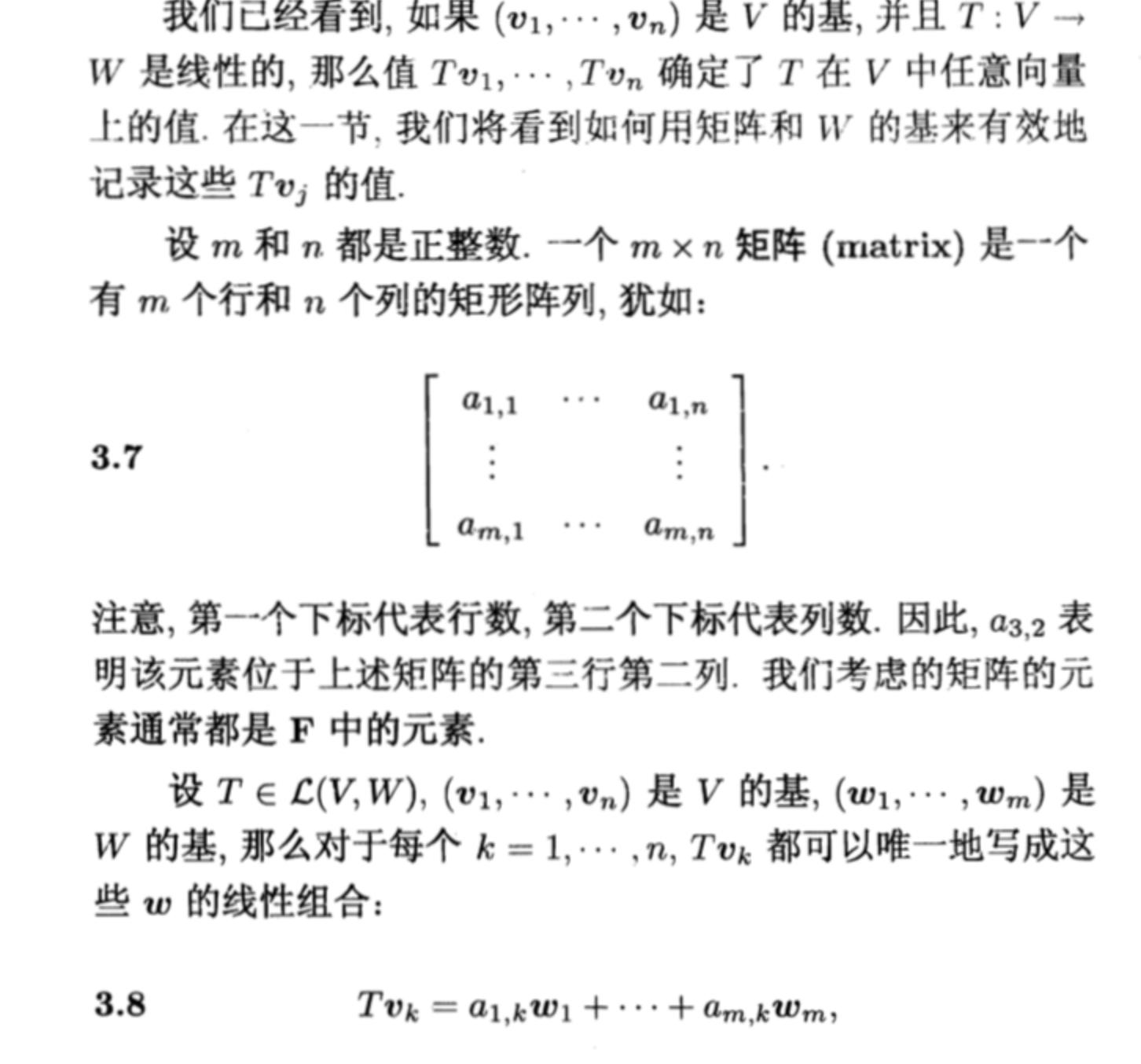
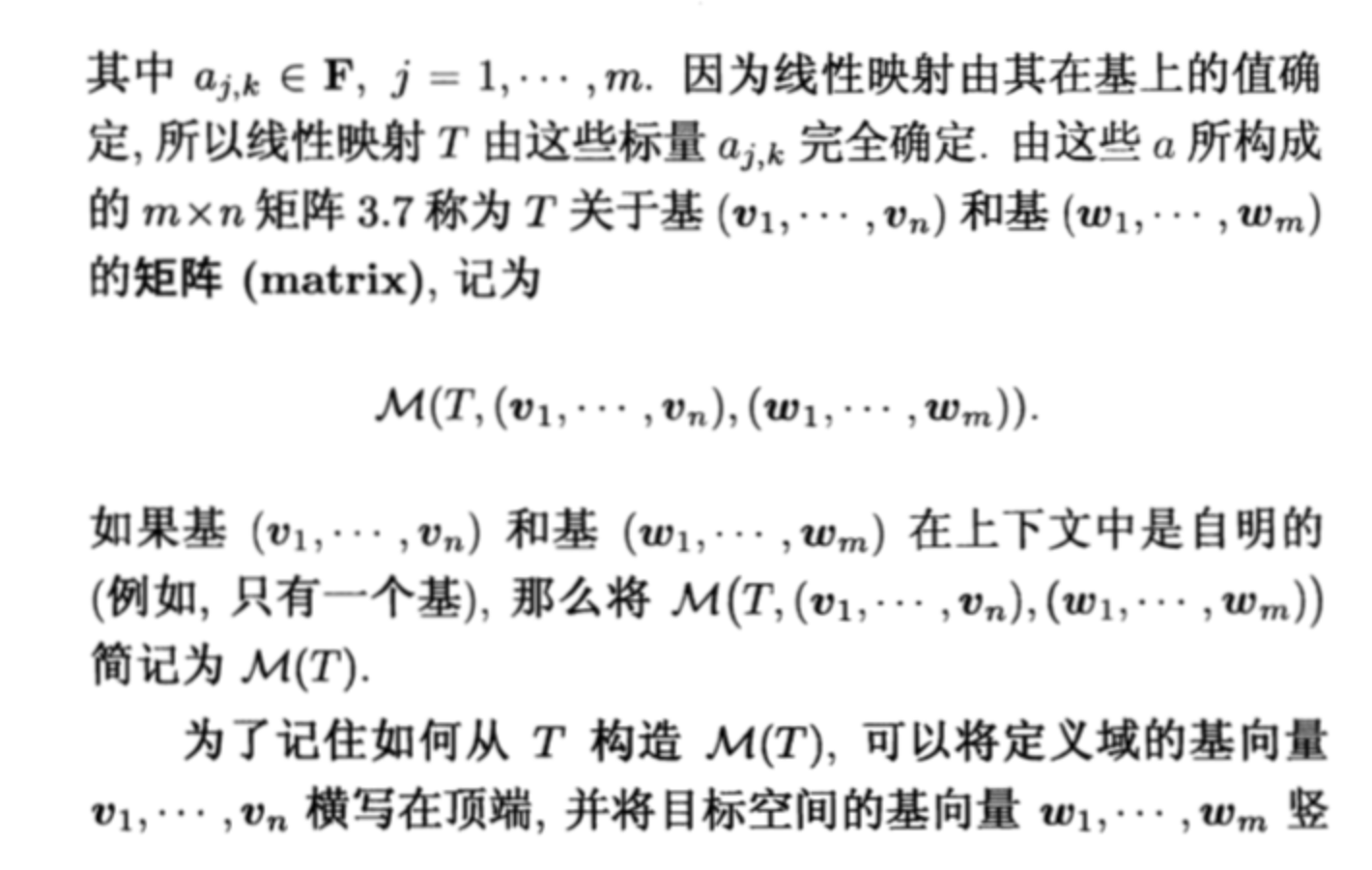
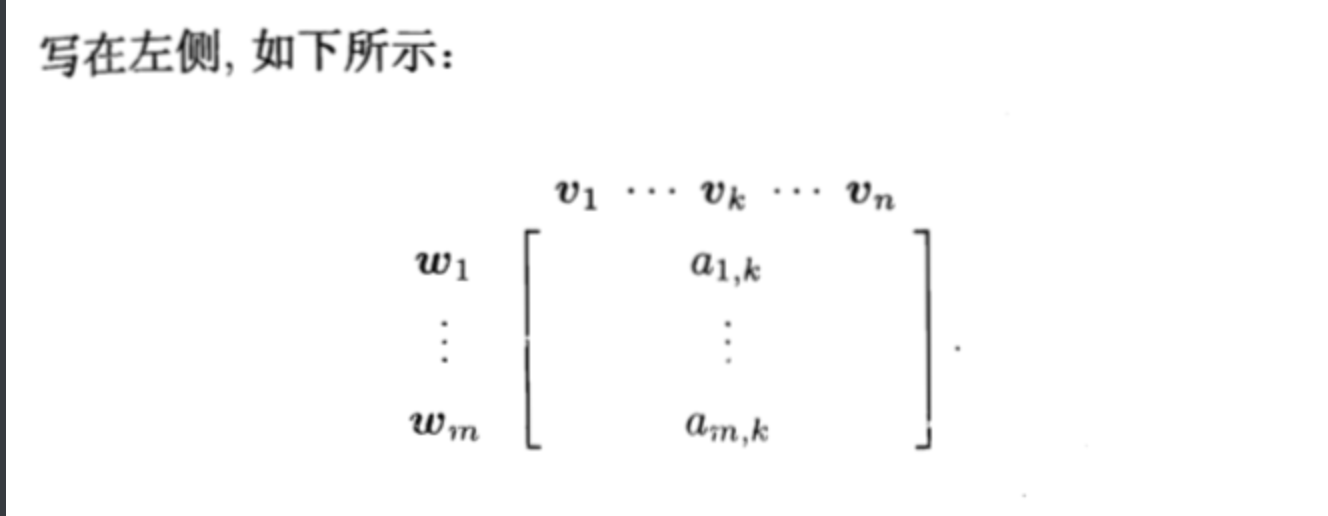
Def: matrix of particular vector (坐标)
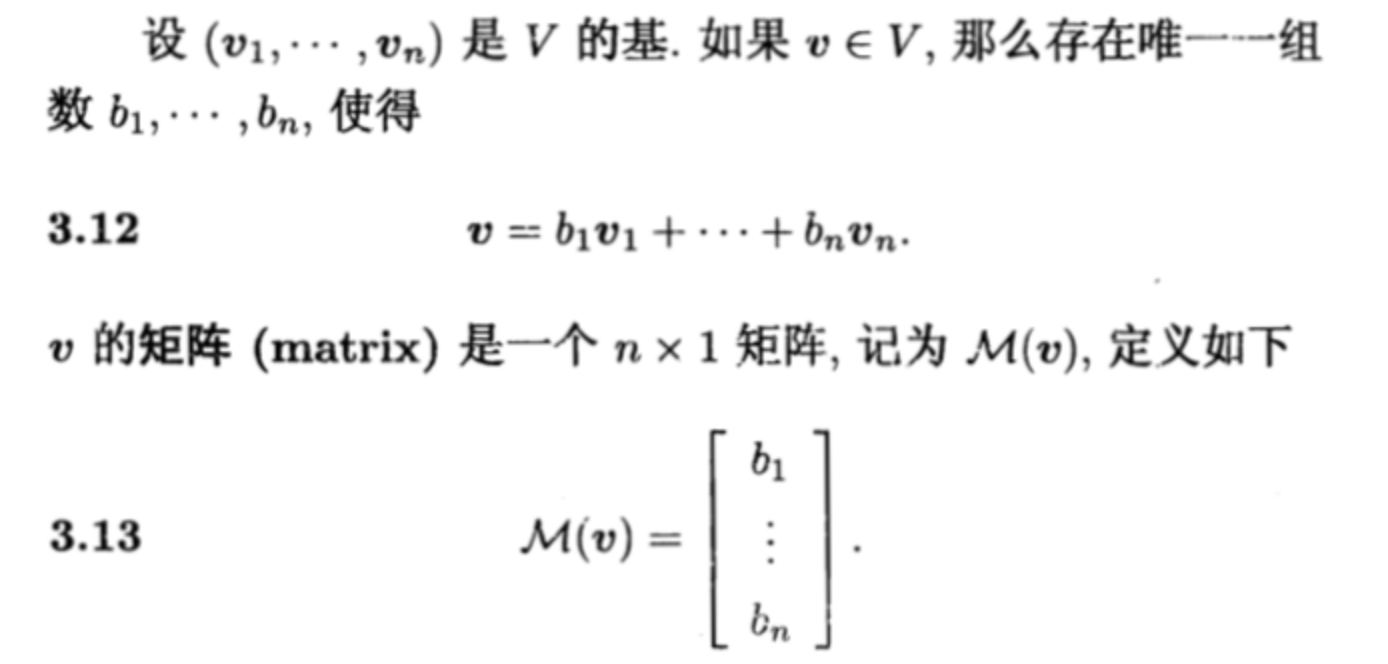
Qua: 变基 =〉 基与基的关系
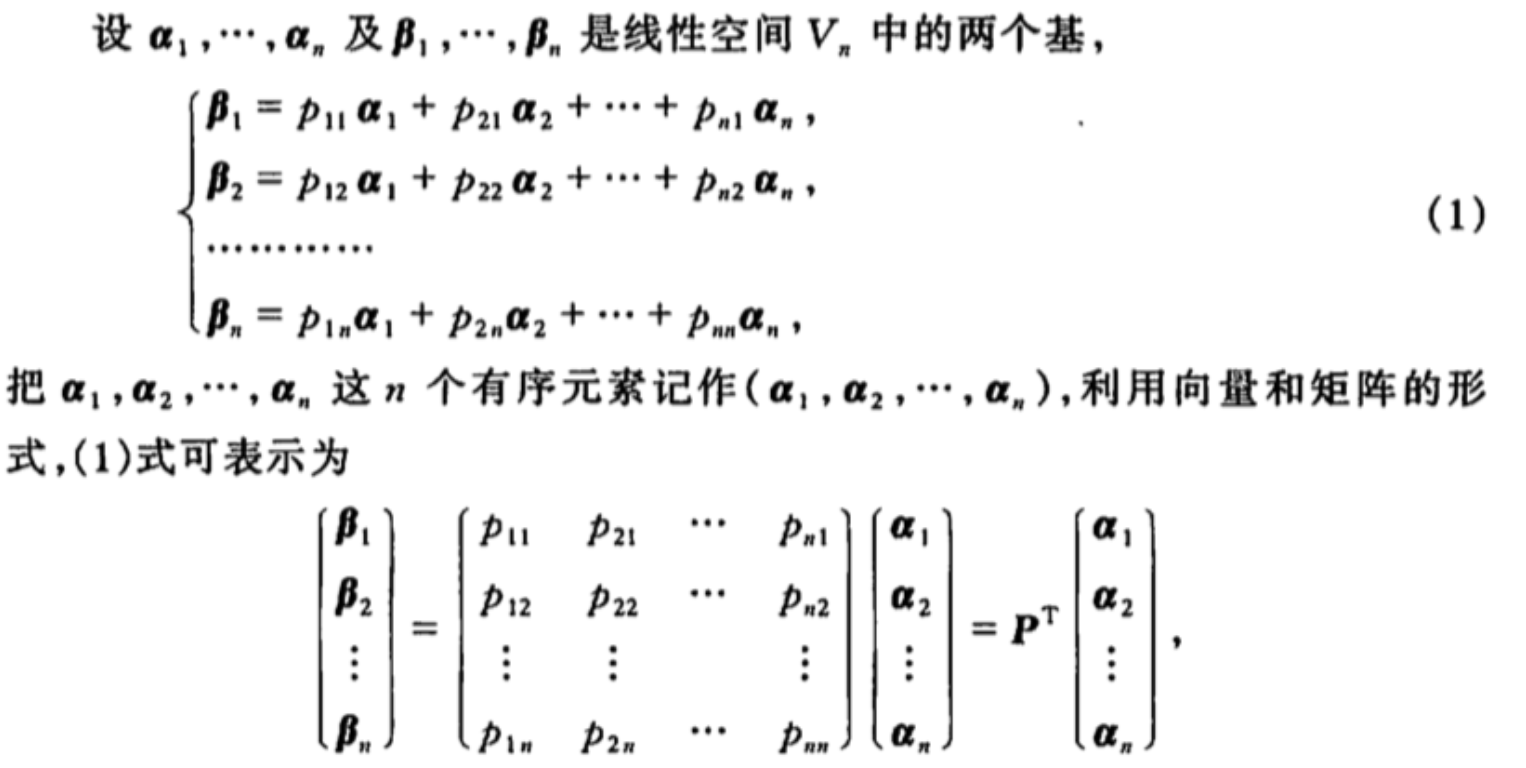

Qua: 变基 =》坐标与坐标的关系

Theorm: 变换 =》 坐标与坐标的关系
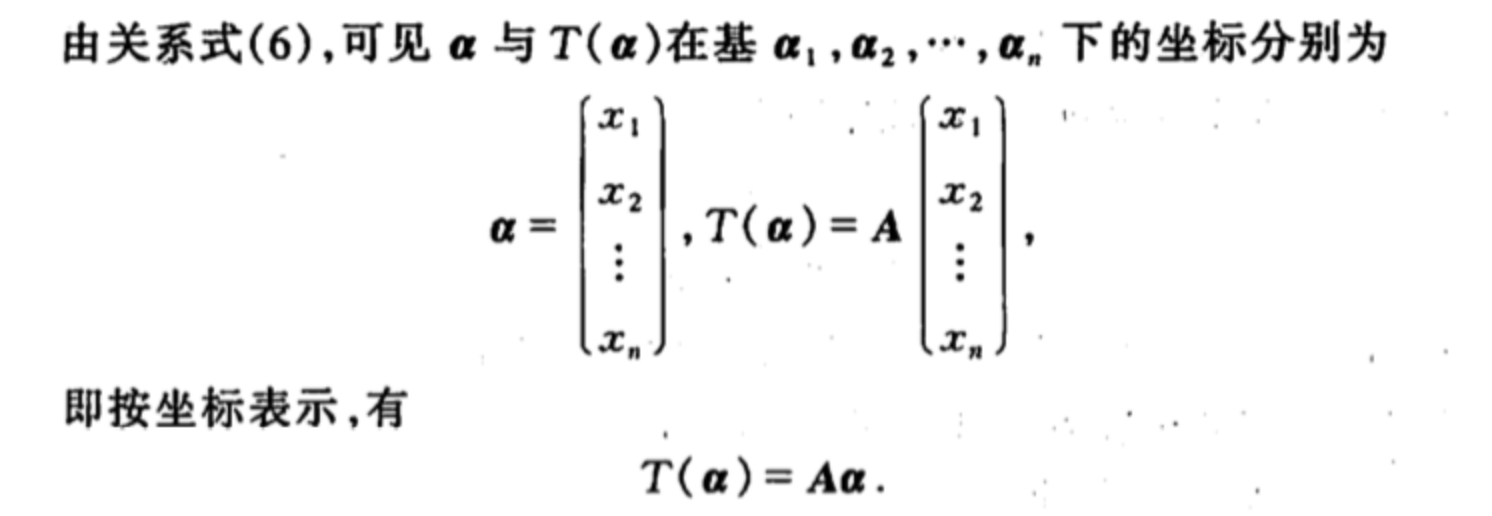
Theorm: 变换 + 换基 =》坐标与坐标的关系

Qua: 变换+变基 =》 各种矩阵的关系

Qua: operation



2.2.1.2. invertible
Def: invertible
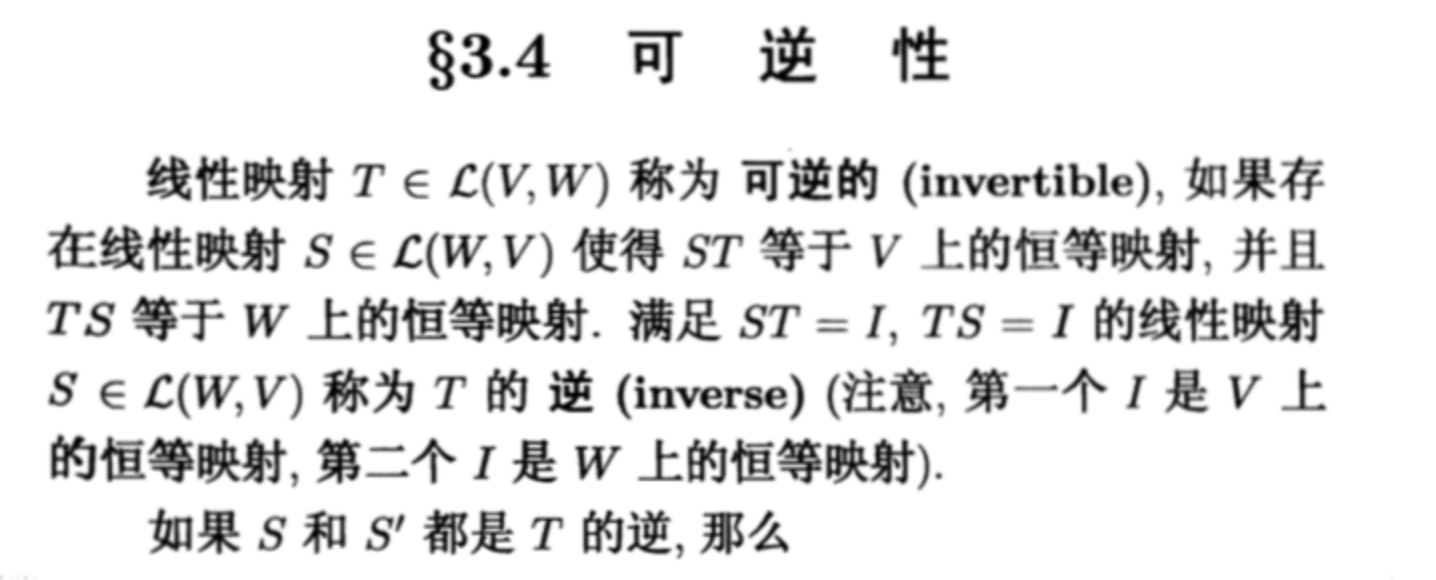
Qua: necc & suff

Qua: necc & suff

Qua: necc & suff

Qua: => only one

Qua: special =>

Def: isnorphic

Def: necc & suff

Qua: operation


2.2.1.3. change of basis
Theorm: change from u to v (with in V) =>

Theorm: change from u to v (with in V)=>

2.2.1.4. trace
Def: trace of function

Qua: => sum of egvalue

Theorm: trace of function = trace of matrix

- Corollary:

Qua: operation

Corollary:

2.2.1.5. determinant
Def: d of function

d of matrix
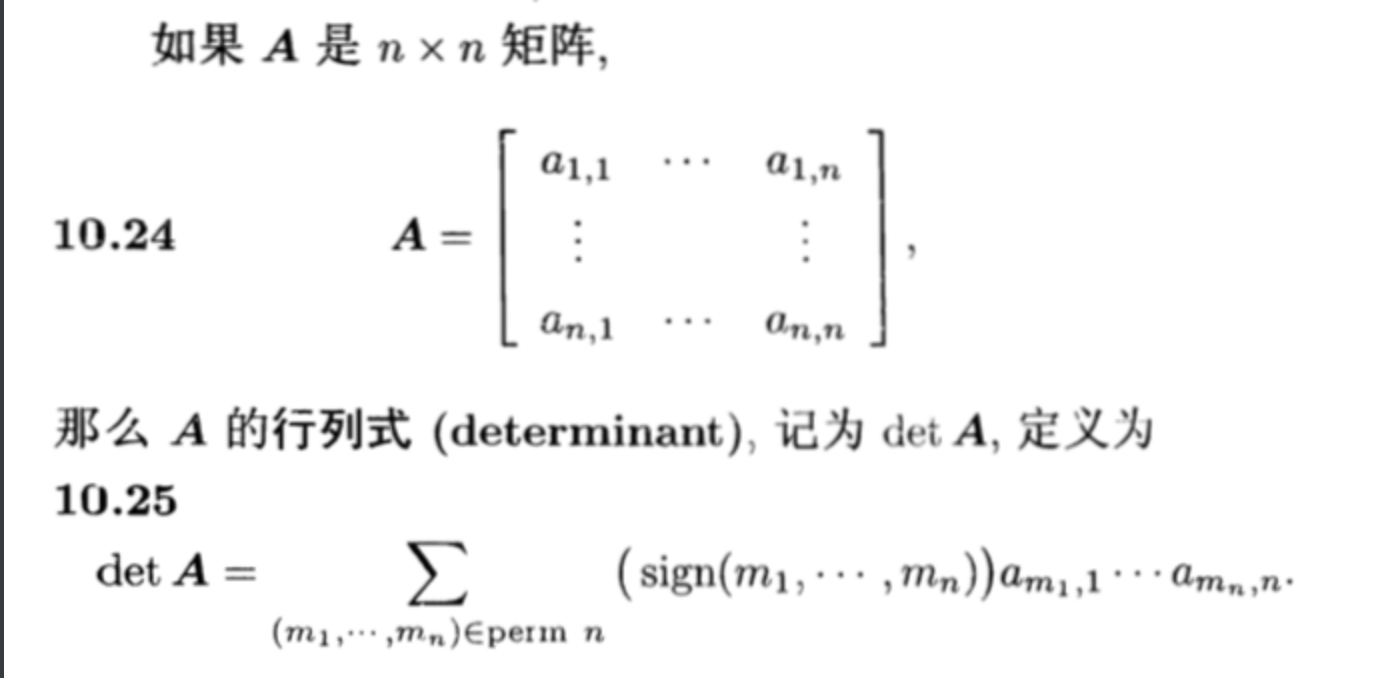
Qua: => inver

Qua: => same

Lemma:

Theorm: => p(T)

Theorm: Karamo => equation

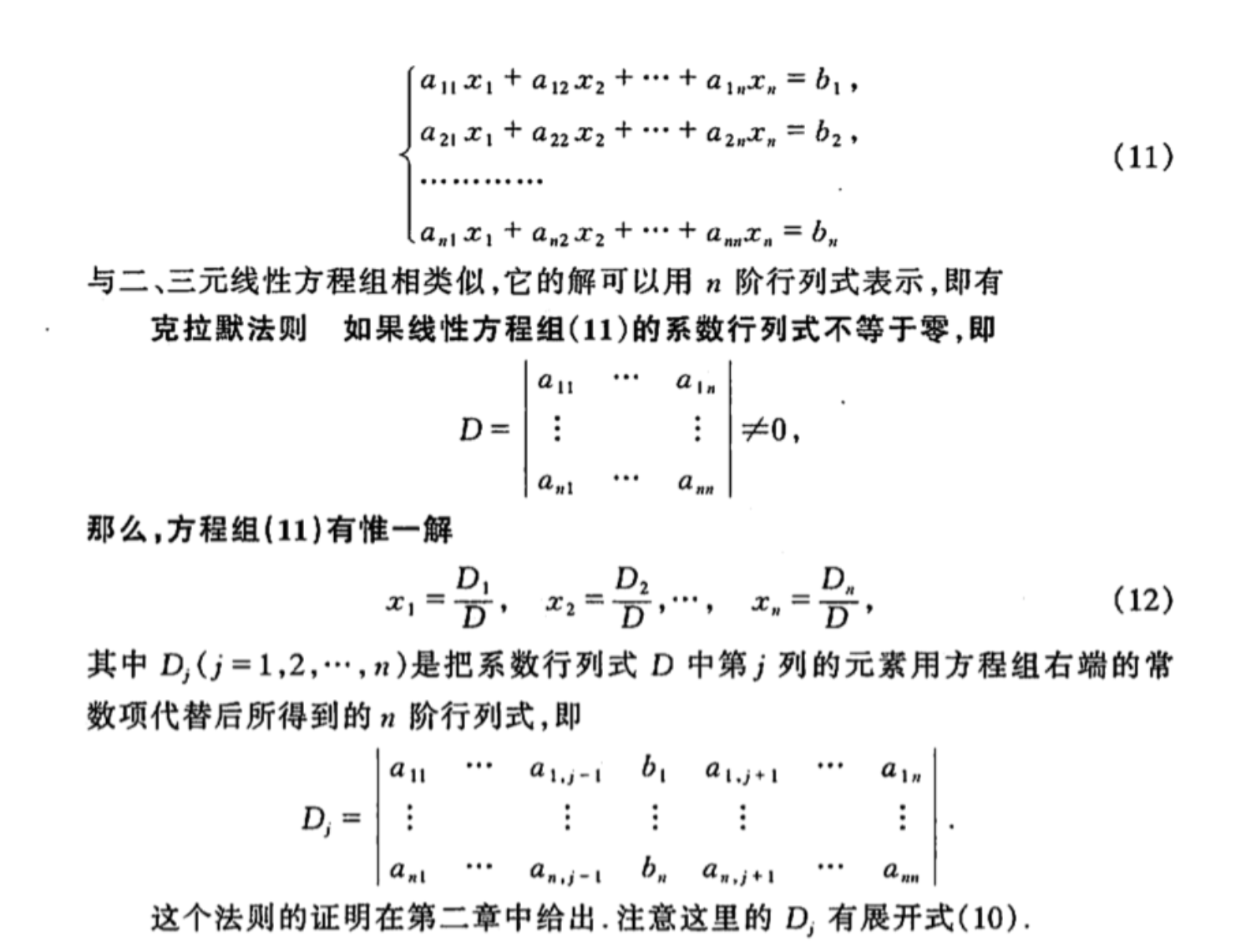

Corollary

Qua: operation
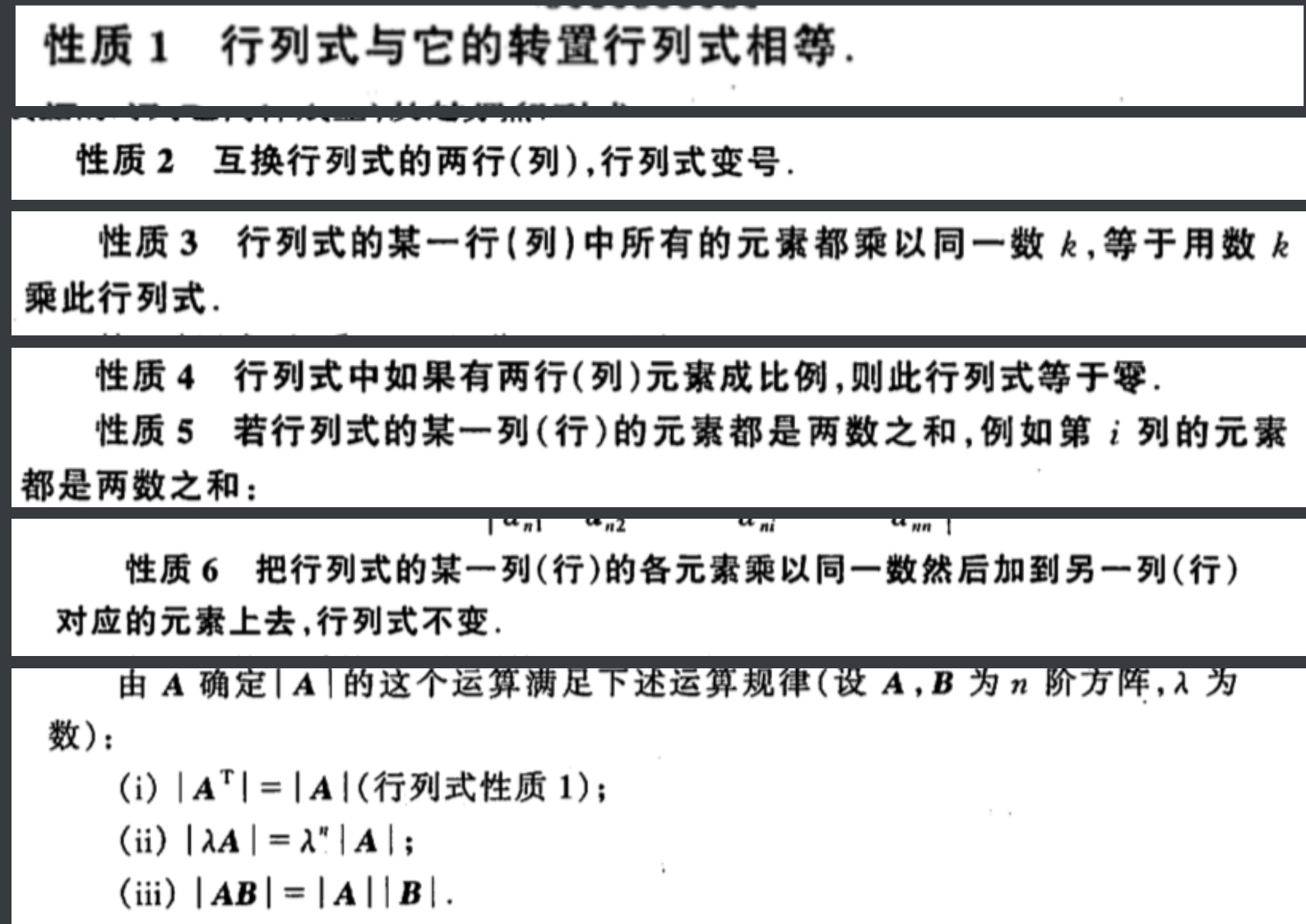




Corollary

Corollary

2.2.1.6. rank
Def: k

Def: rank

Theorm: rank = rank

Qua: => AX=0

Qua: => AX=bequatins



Qua: operations
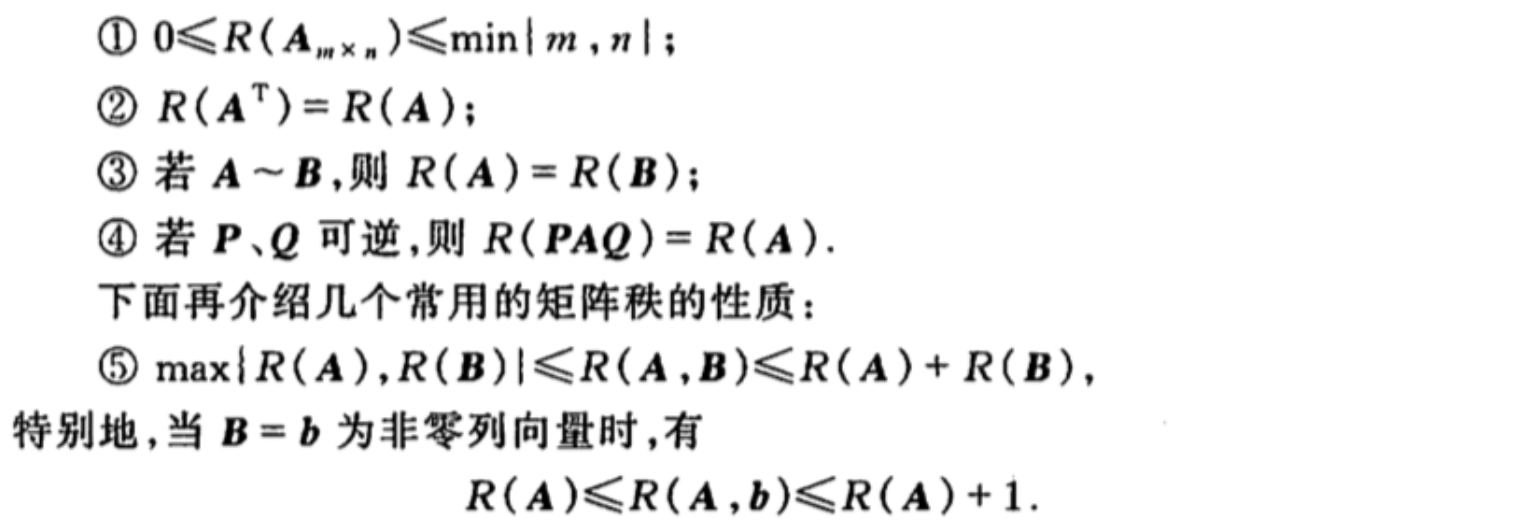
2.2.2. relationships between matrix
2.2.2.1. equivalent
Def: variations
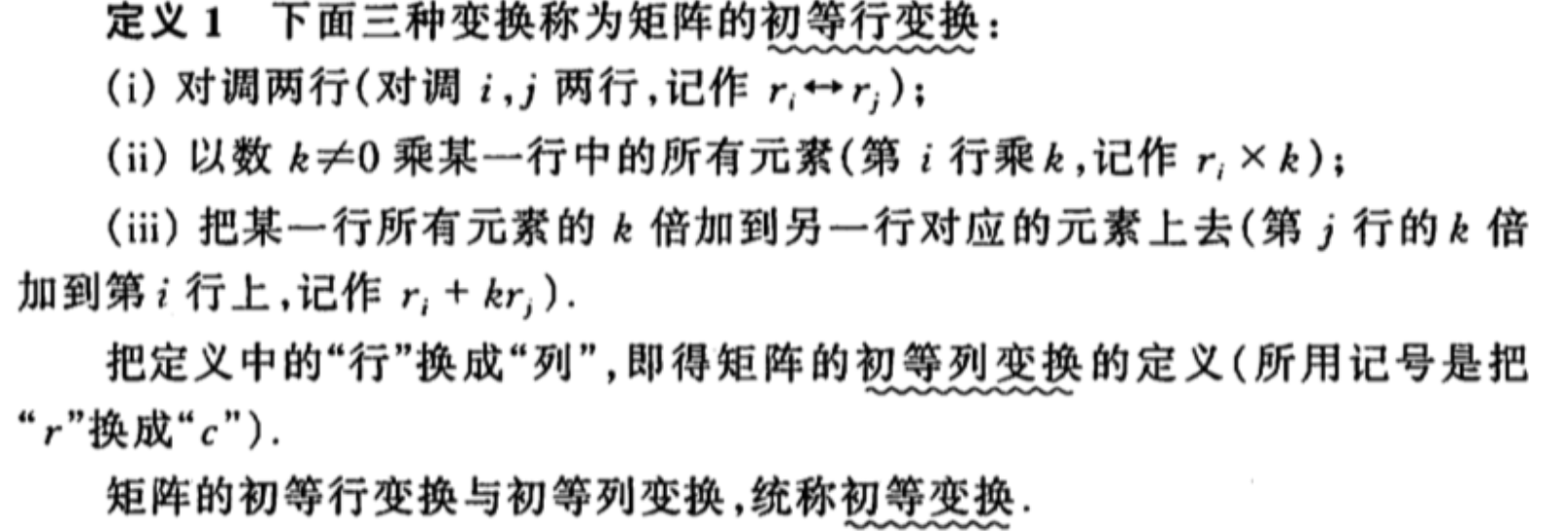
Def: equivalence

Qua: necc & suff

Corollary

Qua: => rank

2.2.2.2. similar
Def: similar

Theorm: necc & suff of similar to diag

Qua: => same egvalue

2.2.2.3. congruent
Def: 二次型 & 标准型
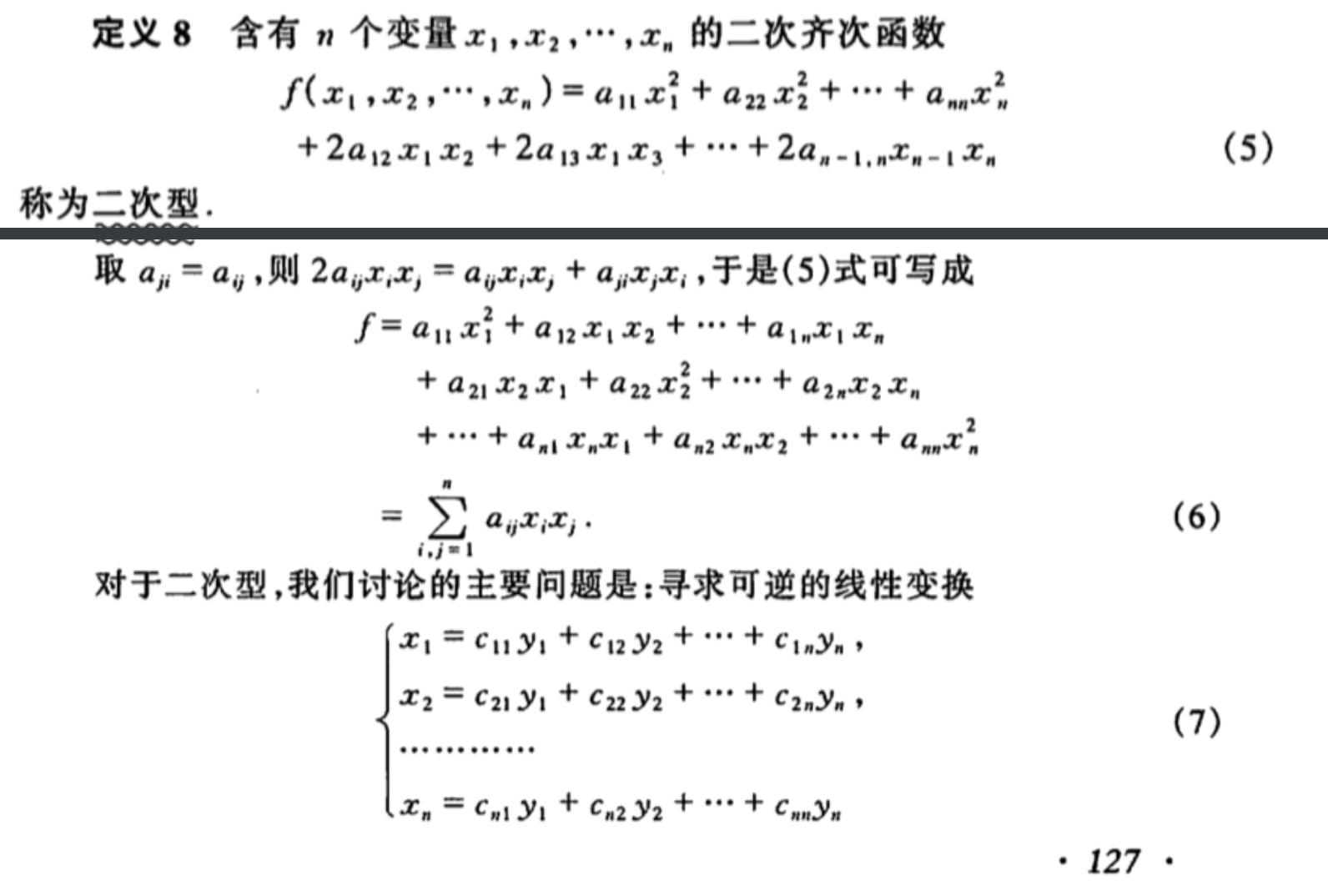
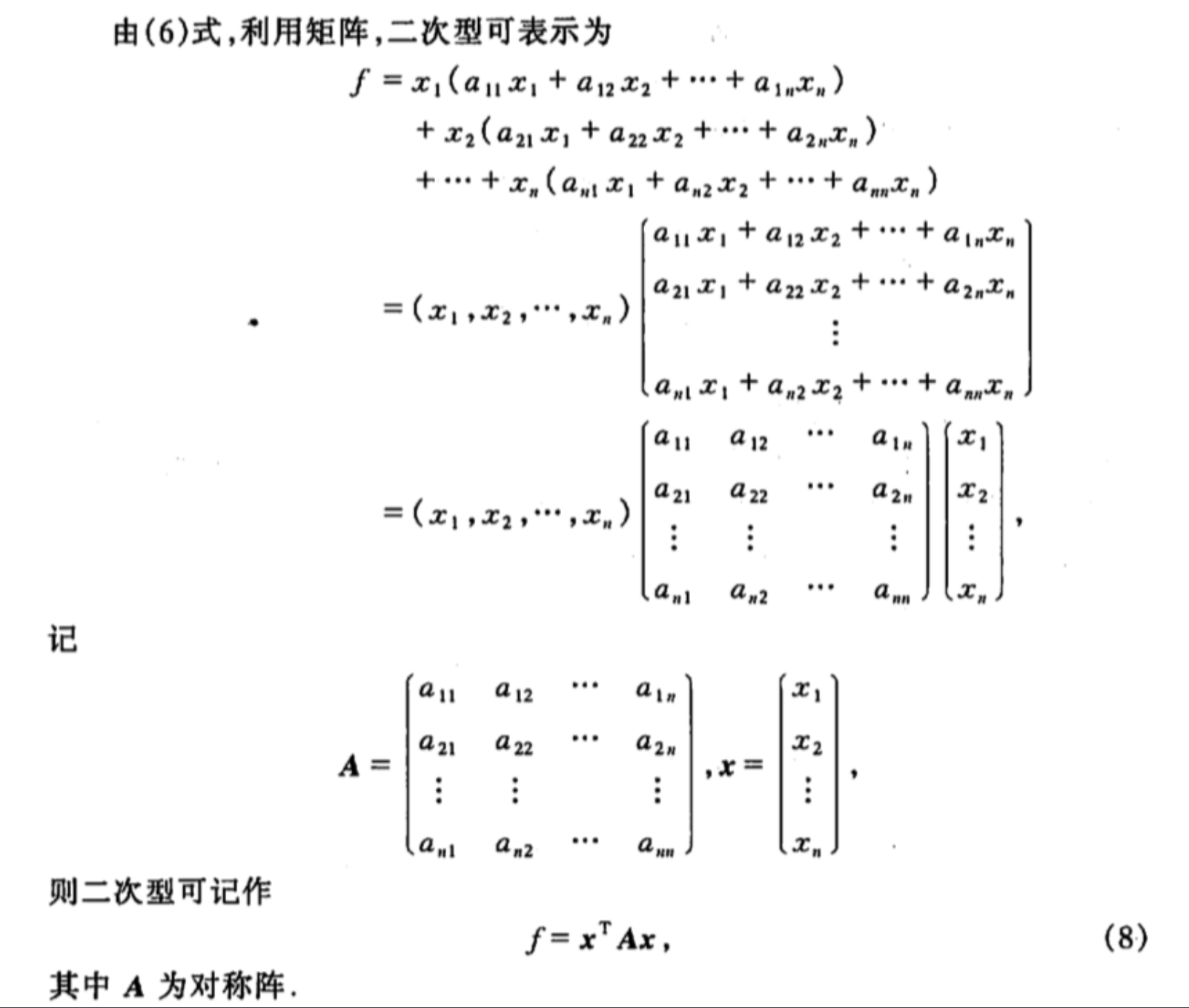
Theorm: same way=>

Theorm: => xxx


Def: congruent

2.2.3. special matrix
2.2.3.1. positive definite matrix
Def: positive

Qua: necc & suff



2.2.3.2. orthogonal matrix
Def: orthogonal matrix

Qua: necc & suff


(wiki)
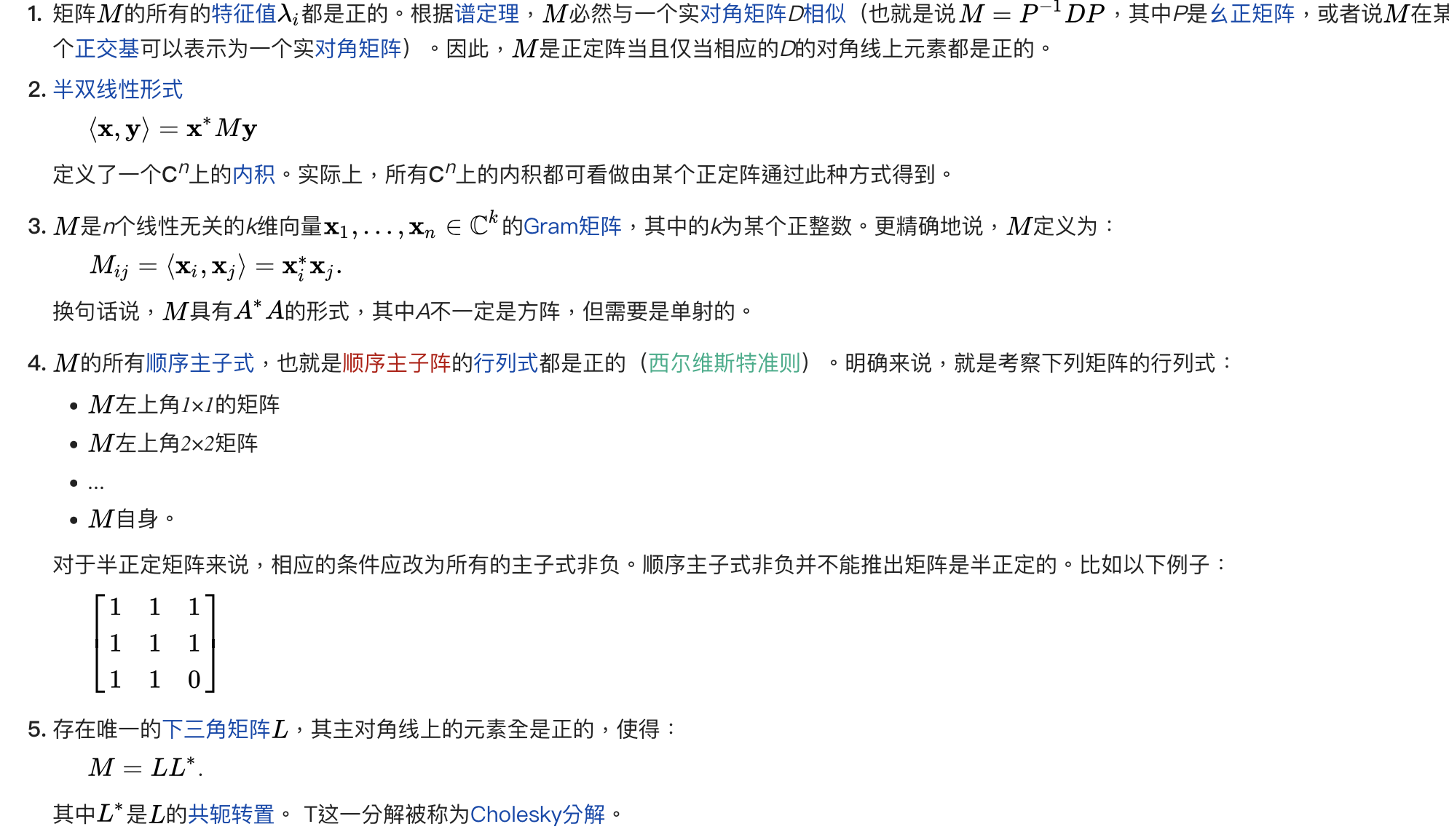
Qua: =>

2.2.3.3. symmetric matrix
Theorm: => egvalue

Theorm: => ortho

Theorm: => decomposition

Corollary

Algorithm
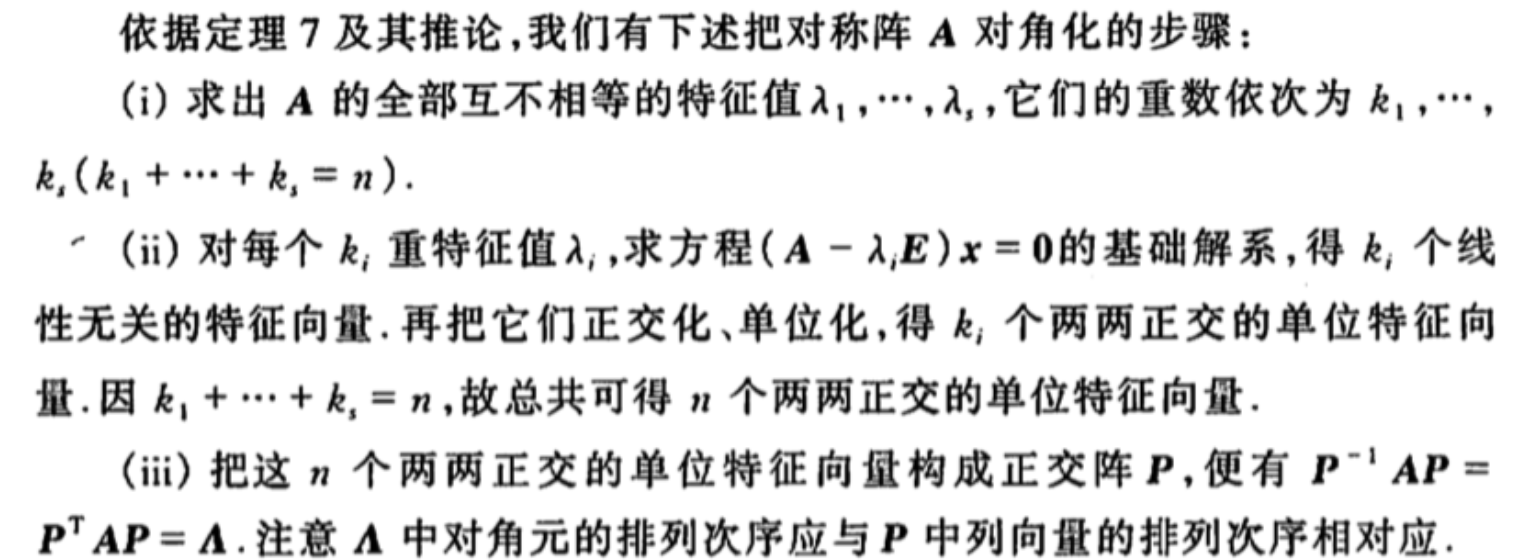
2.3. eigenvalue
2.3.1. eigenvalue
Def: invariant
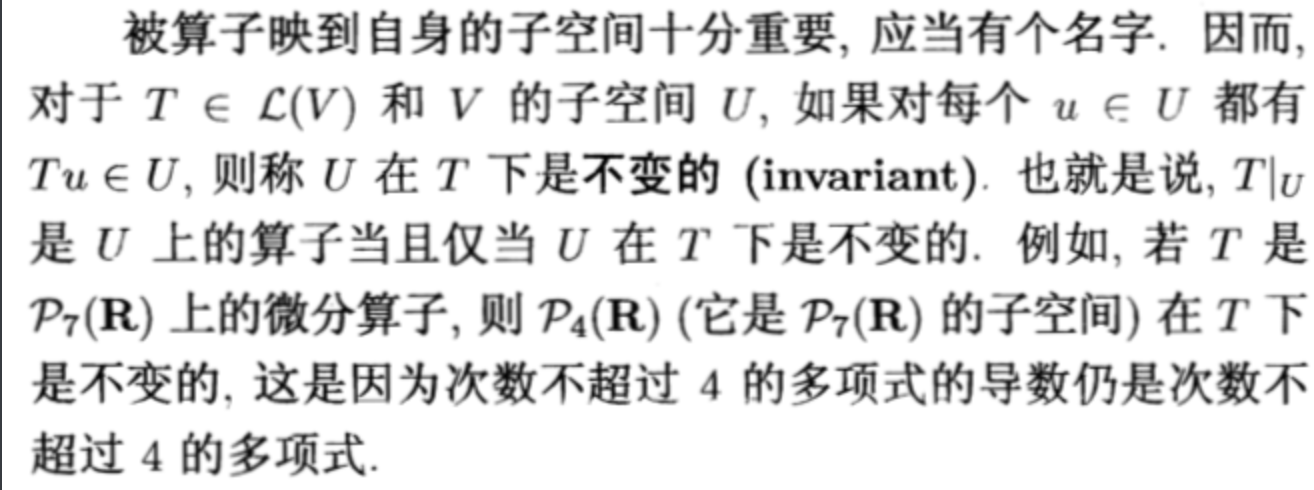
Def: eigenvalue (就是寻找1维不变子空间,一个子空间对应一个eigvector和valu
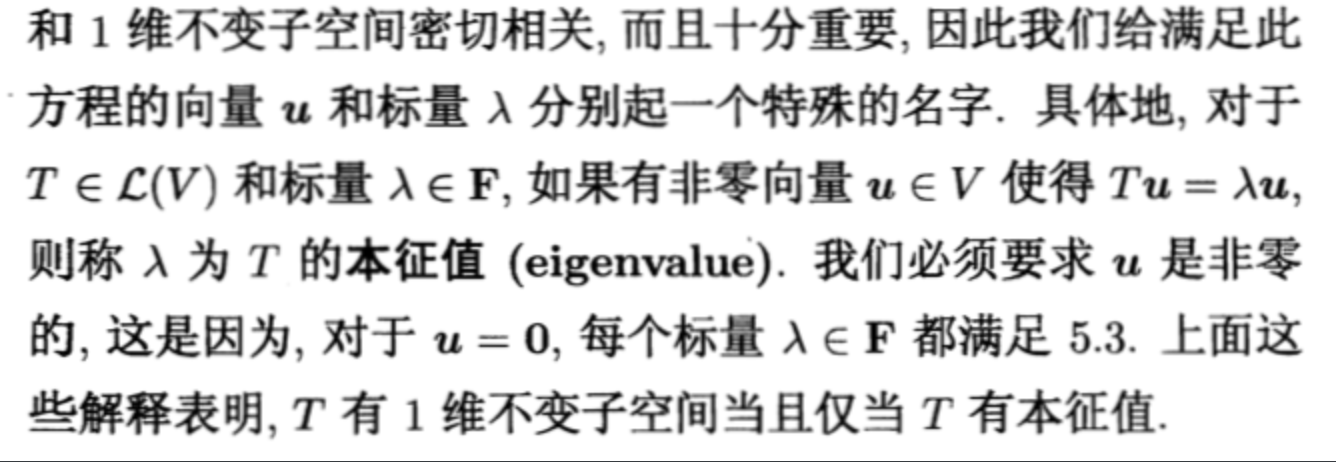
Qua: necc & suff

Qua: => same matrix and function

Qua: => independent


Corollary:

Qua: => every one has

Qua: operation

2.3.2. upper matrix
Def:...
Theorm: necc & duff

Theorm: => inverisible

Theorm: => eigvalue

Theorm: => otho basis

Theorm: some basis =>

2.3.3. diagonal matrix
Def:...
Qua: necc & suff

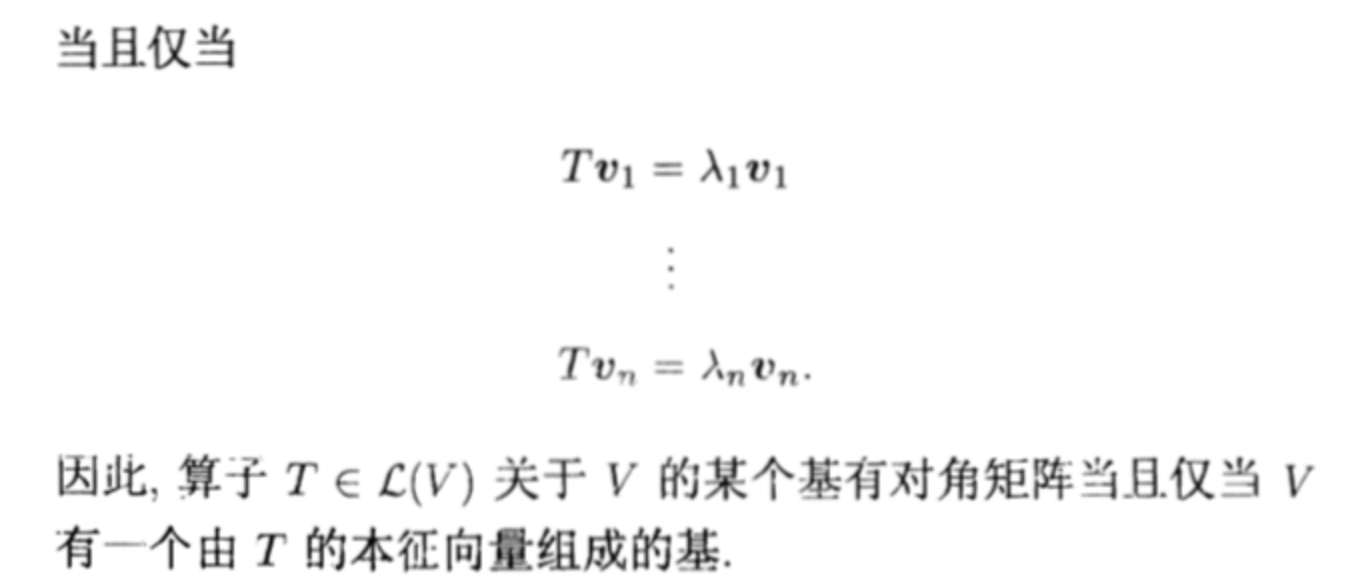
Qua: necc & suff

Qua: necc & suff
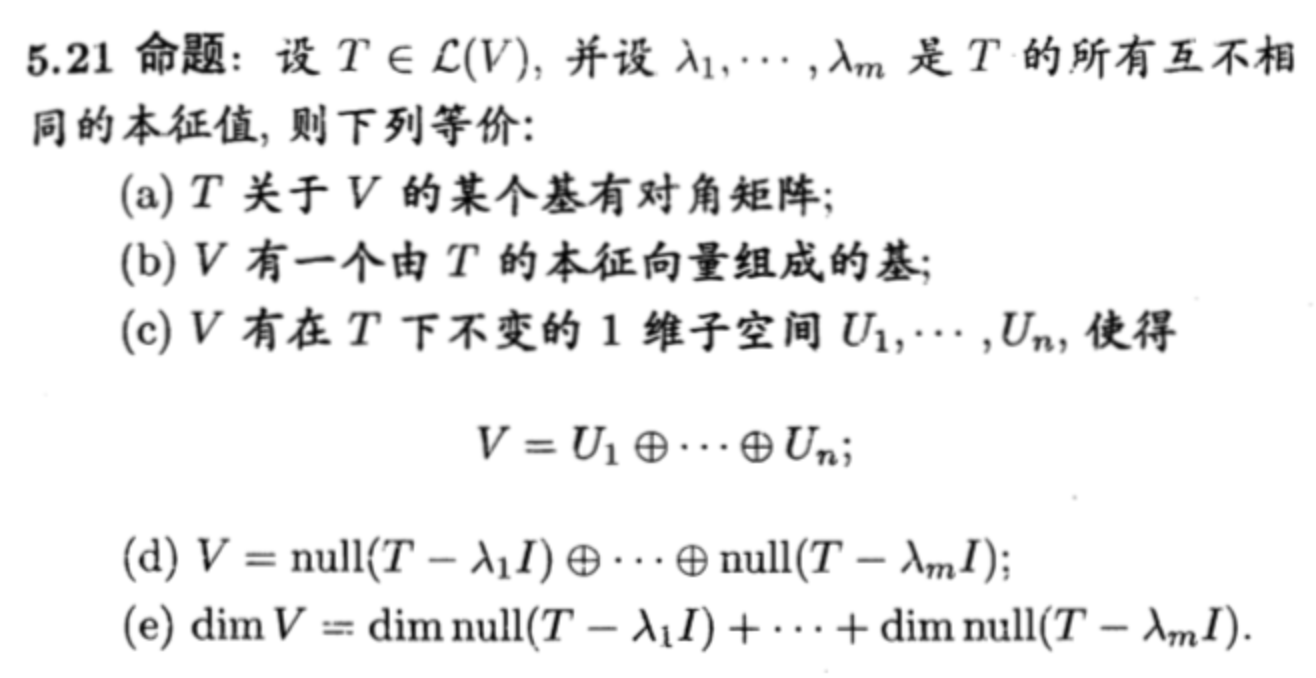
2.3.4. same egenvalue
2.3.4.1. generalized egvalue
Def: generalized egvalue
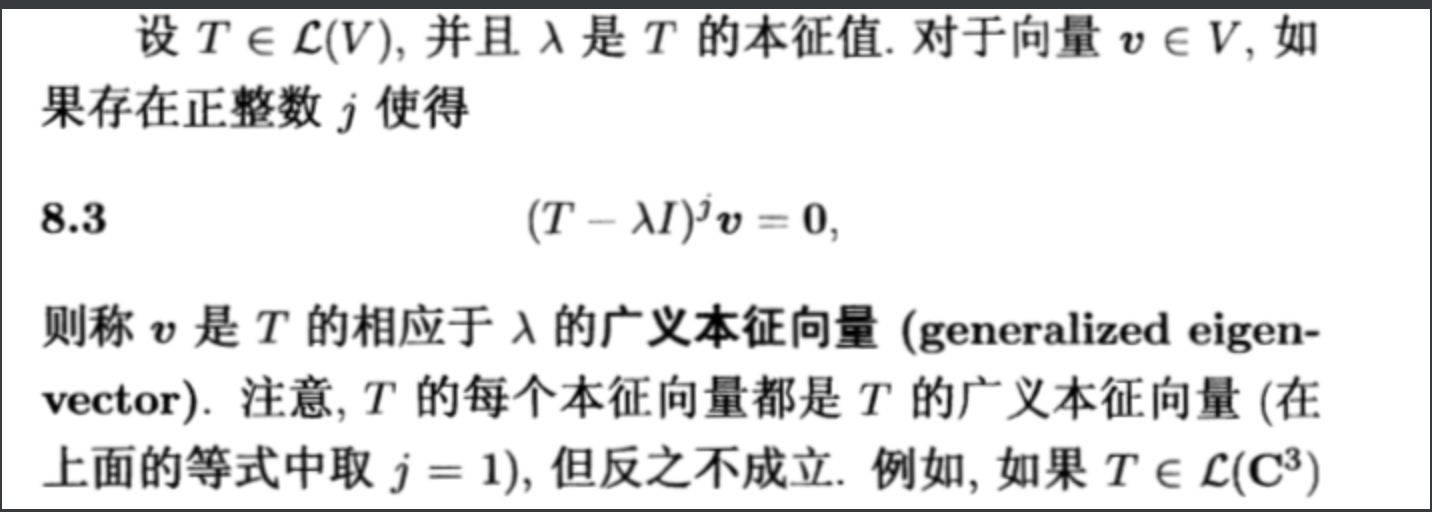
Theorm: about null space

Theorm: about null space

Corollary : egvalue =>

Theorm: about range space

Def: nilpotent
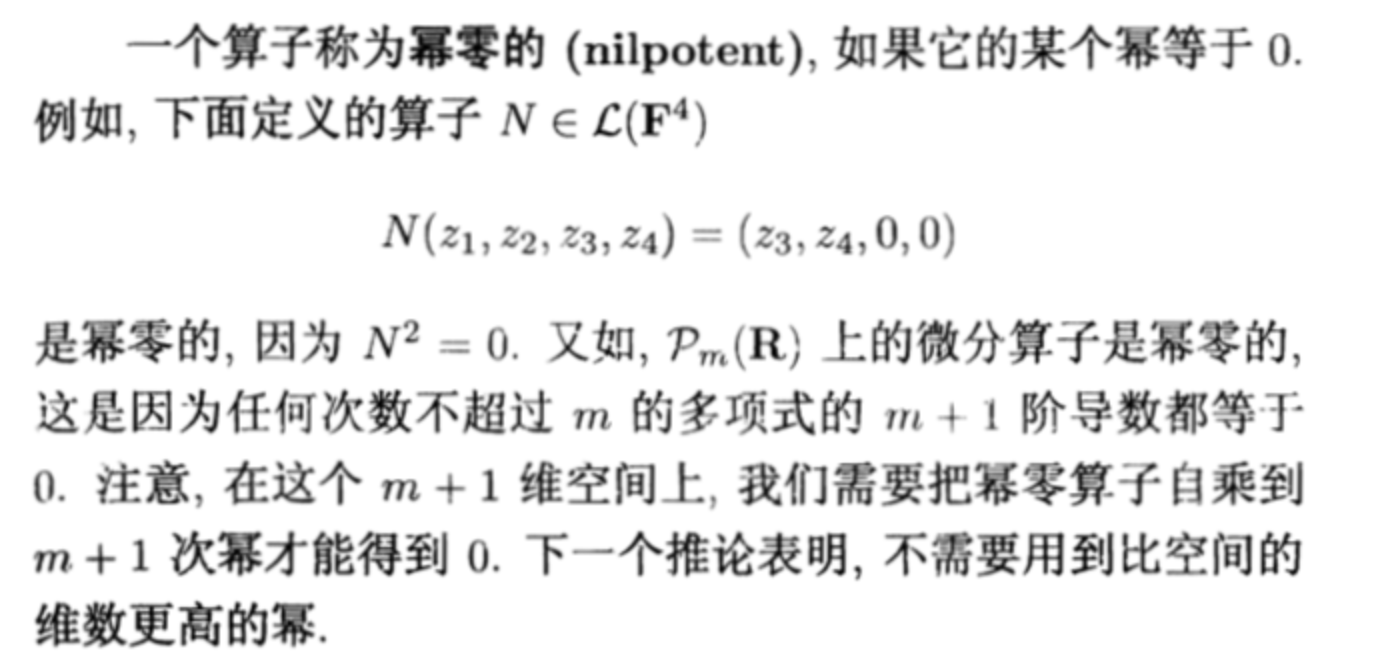
Qua: =>

2.3.4.2. characteristic polynomial
Theorm: important!

Def: multiplicity

Theorm: => sum

Def: characteristic polynomial qt
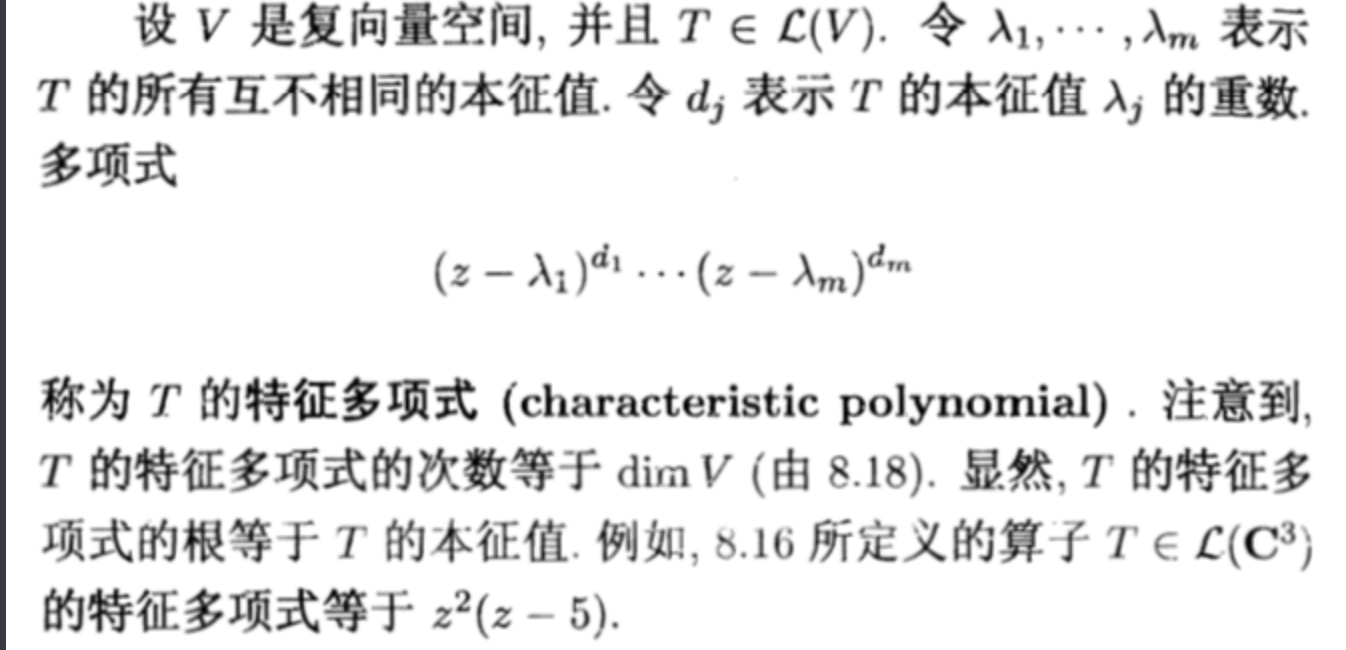
Theorm: => qt= 0

2.3.4.3. decomposition
Theorm:

Theorm: princliple structure decomposition

Corollary:

Lemma:
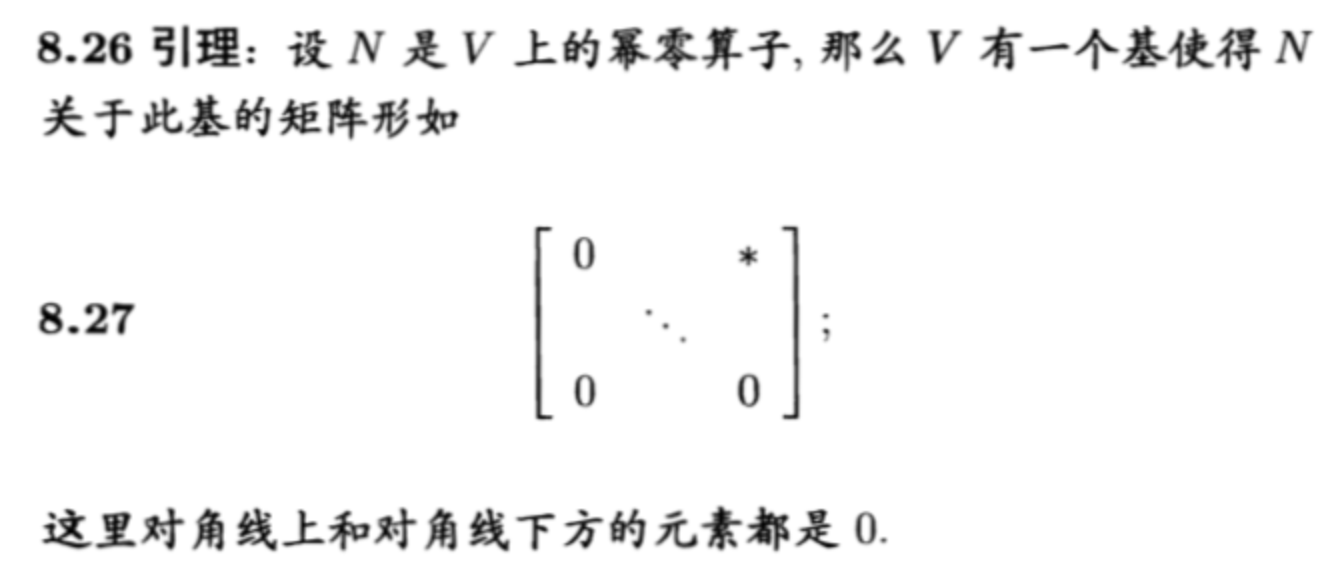
Theorm: important
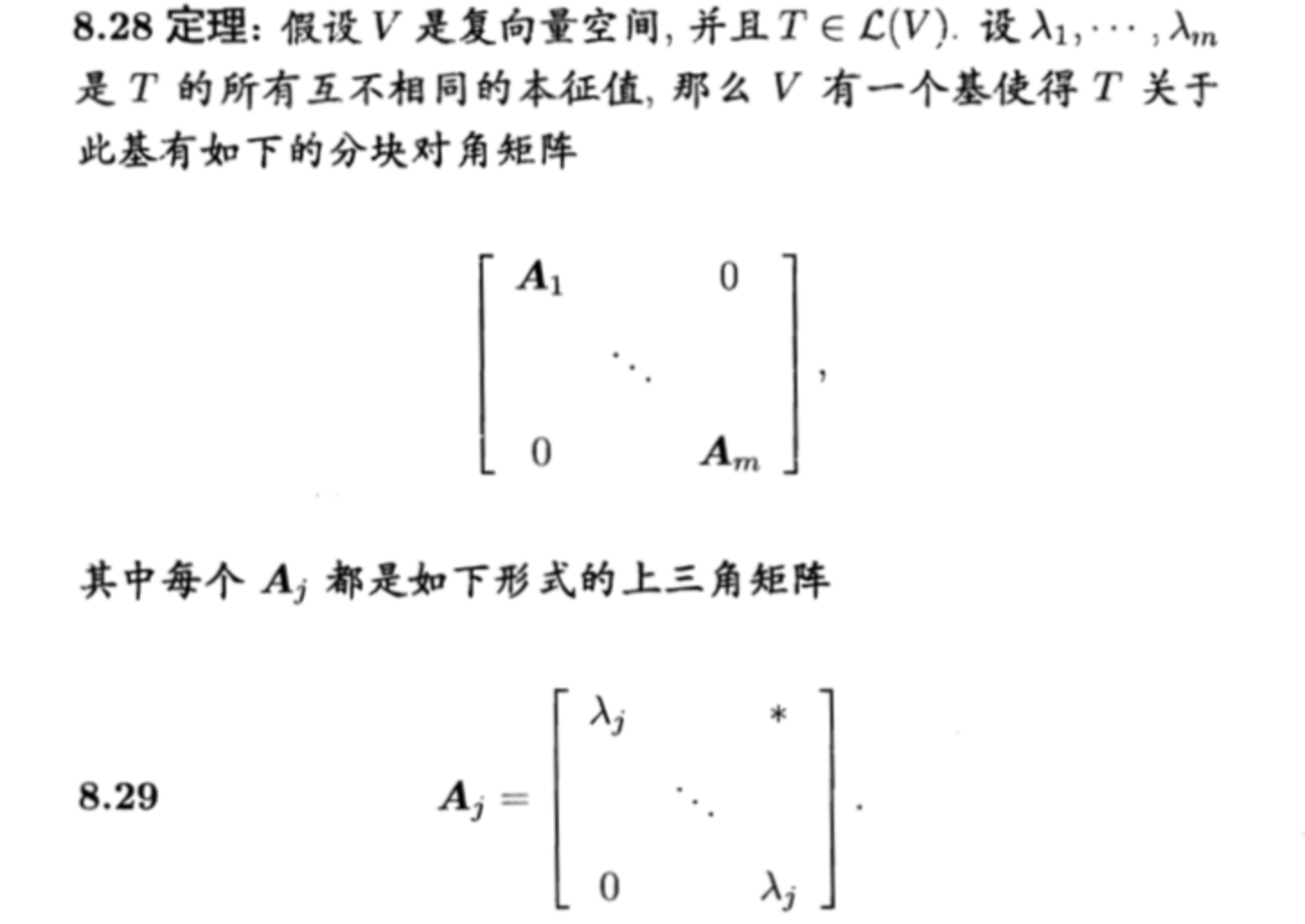
square root ( application of 2.4.7.1)
Lemma:

Theorm: inver => square root

2.3.4.4. minimal polynomial
Def:
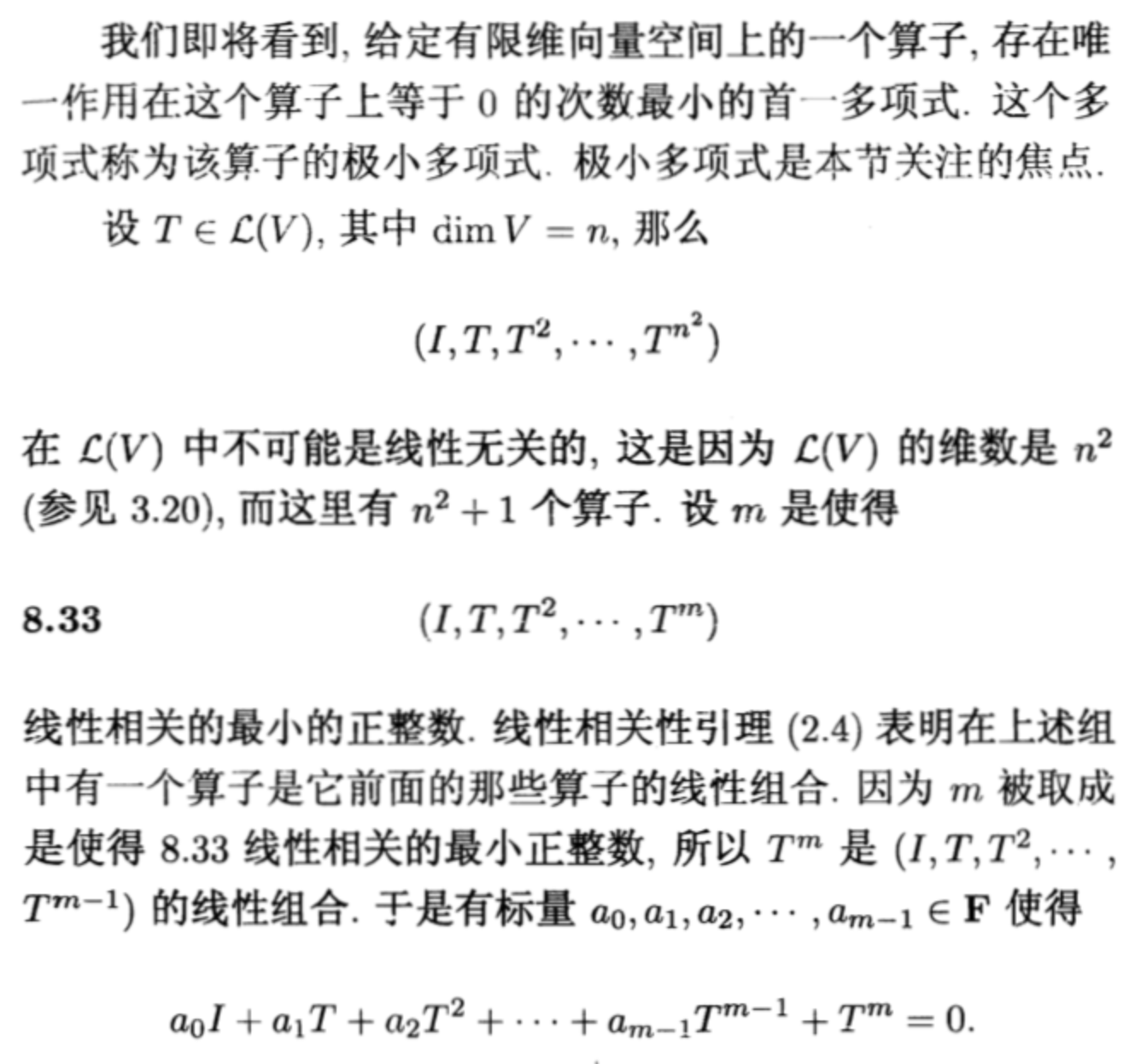
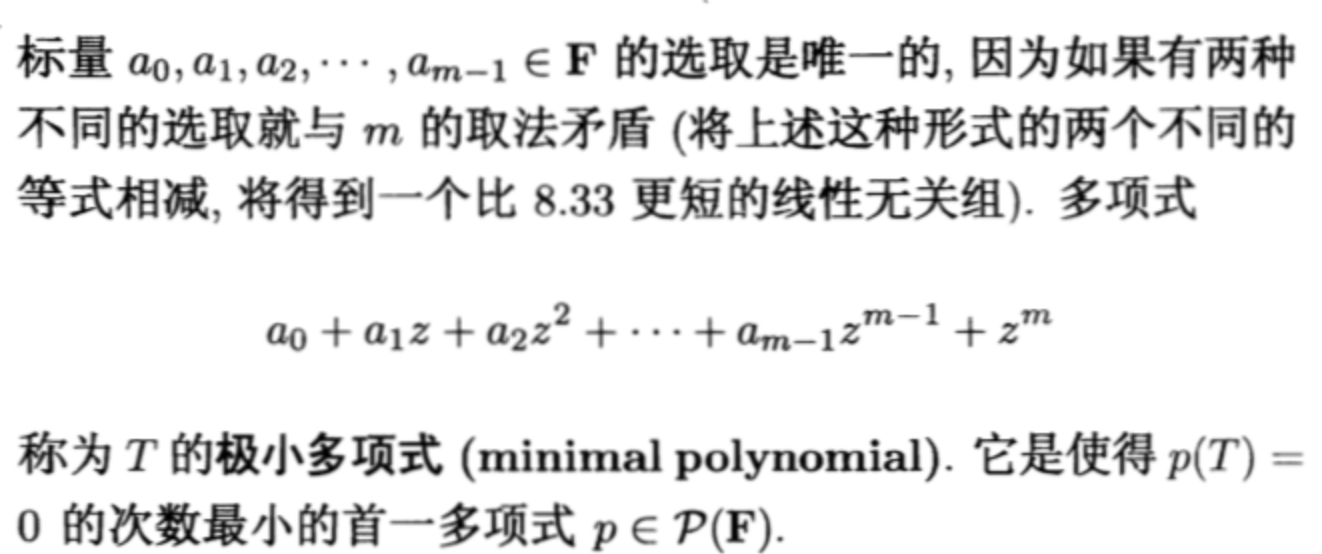
Theorm: => 包含q(T)

Theorm: => egvalue (和特征多相似根相同,但是重数不同;特征多项式重根数对应特征值重数,极小多项式对应最大jordan块的介数)(所以我们可以认为一个特征值重数= 特征多项式重数 = jordan块 + jordan块 ,其中最大Jordan块介数 = 极小多项式重数)
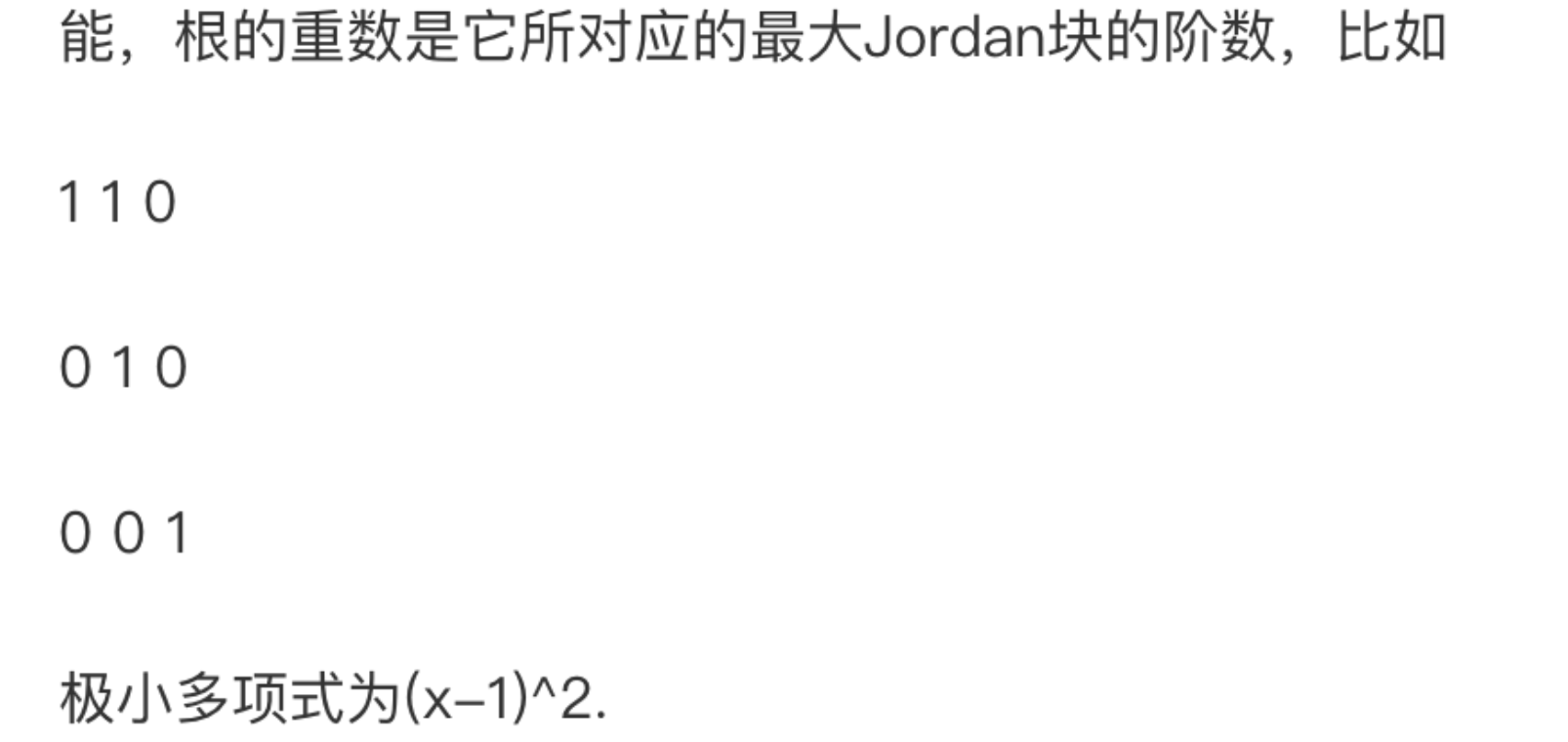

2.3.4.5. jordan basis
Lemma

Def: jordan basis
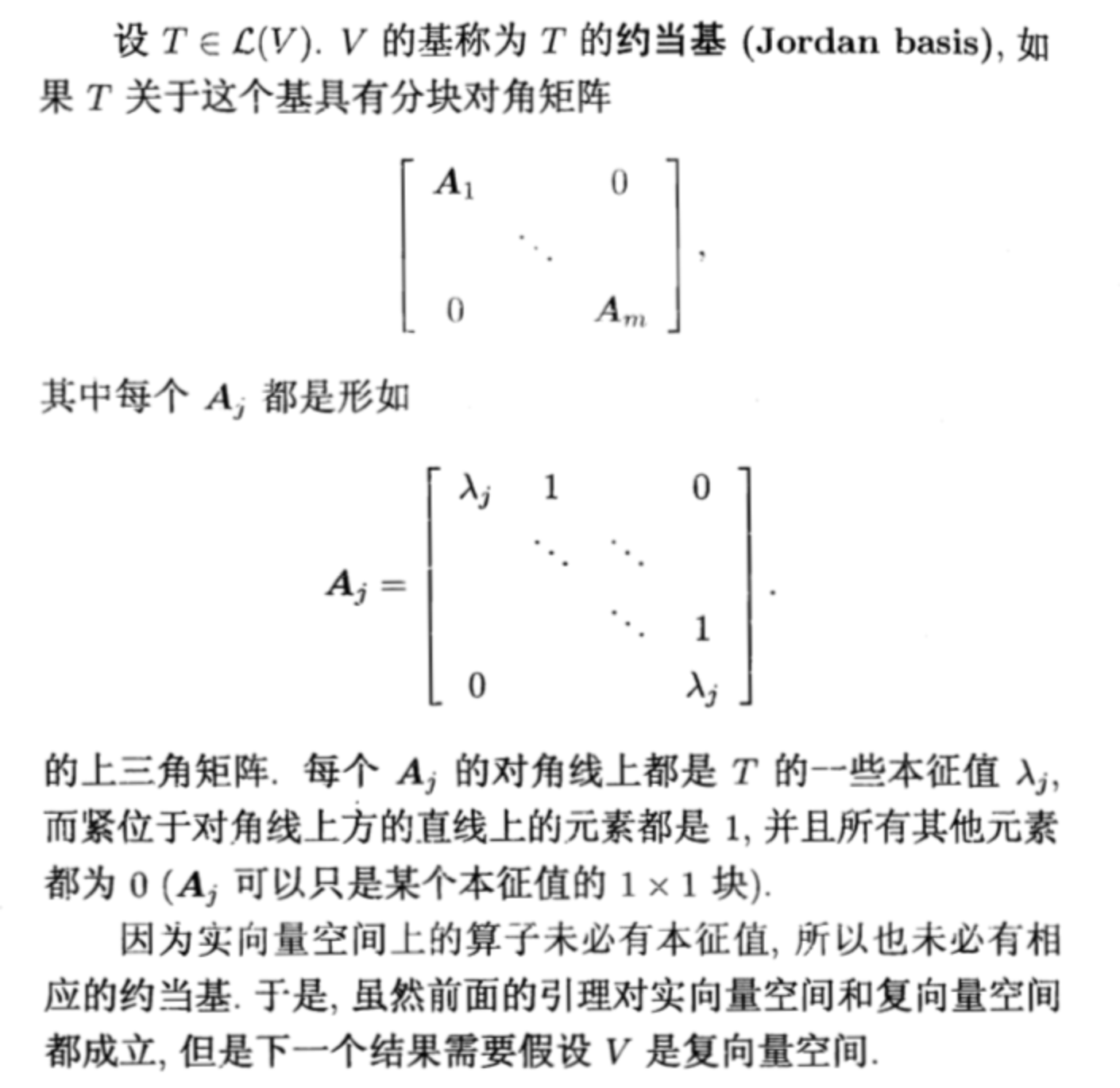
Theorm: any =>

2.3.5. real vector space
2.3.5.1. basic
Theorm:

Theorm:

2.3.5.2. block upper matrix
Def:
Theorm:
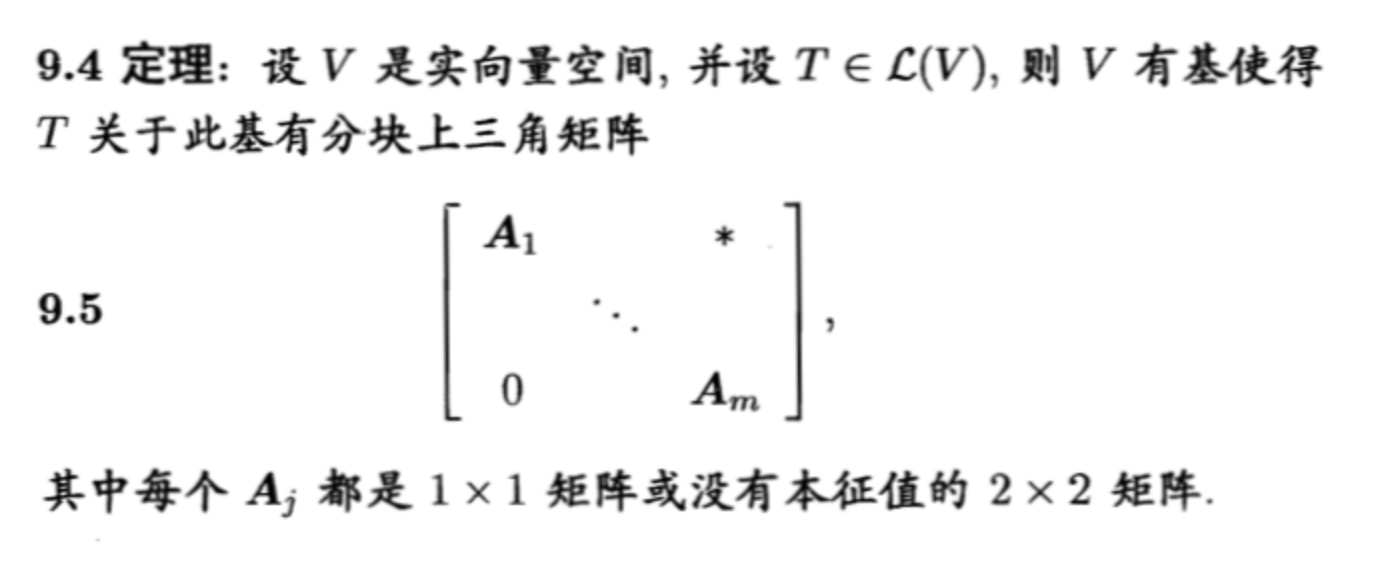
2.3.5.3. pt
Theorm:

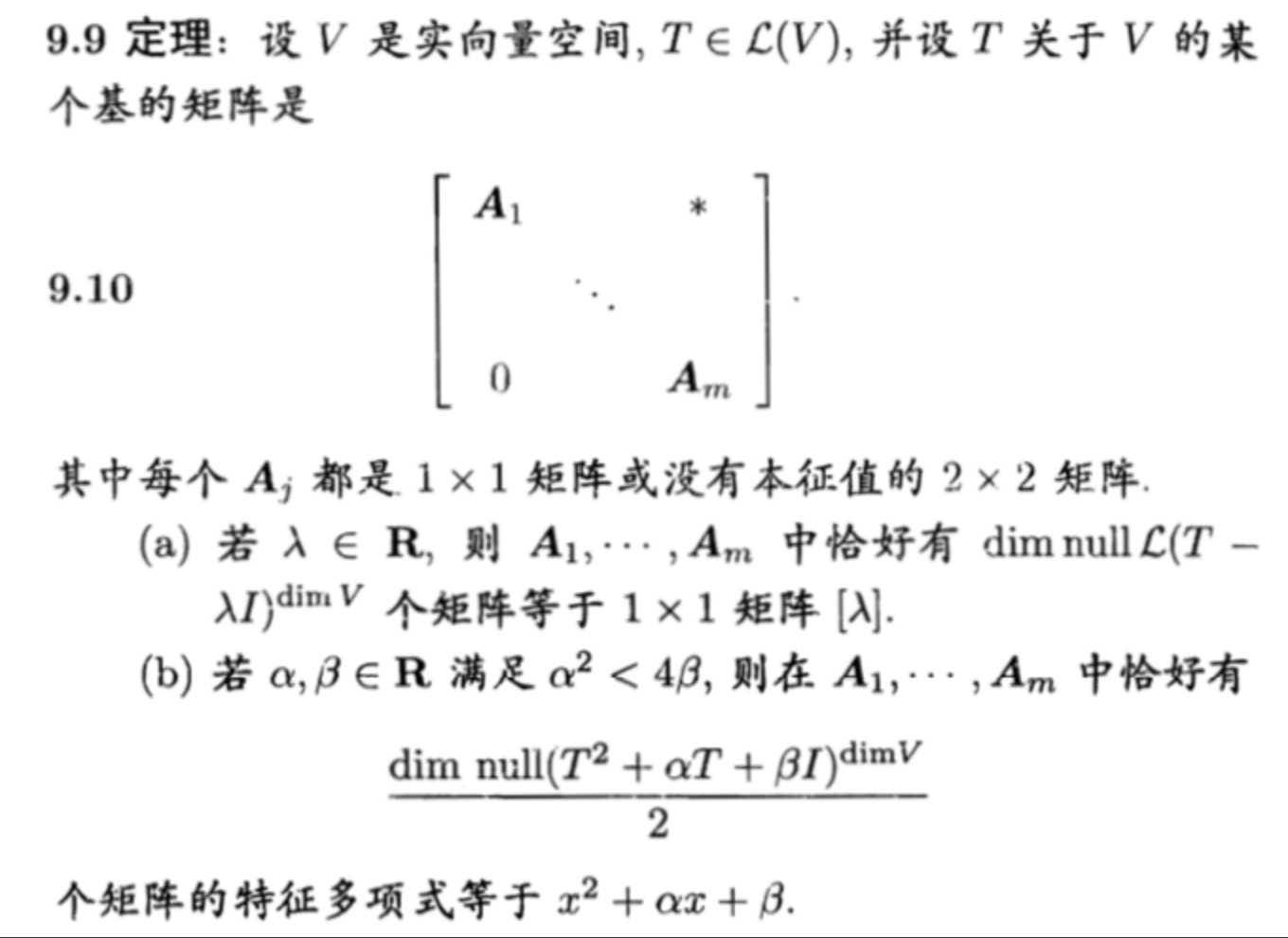
Def: multiplicity
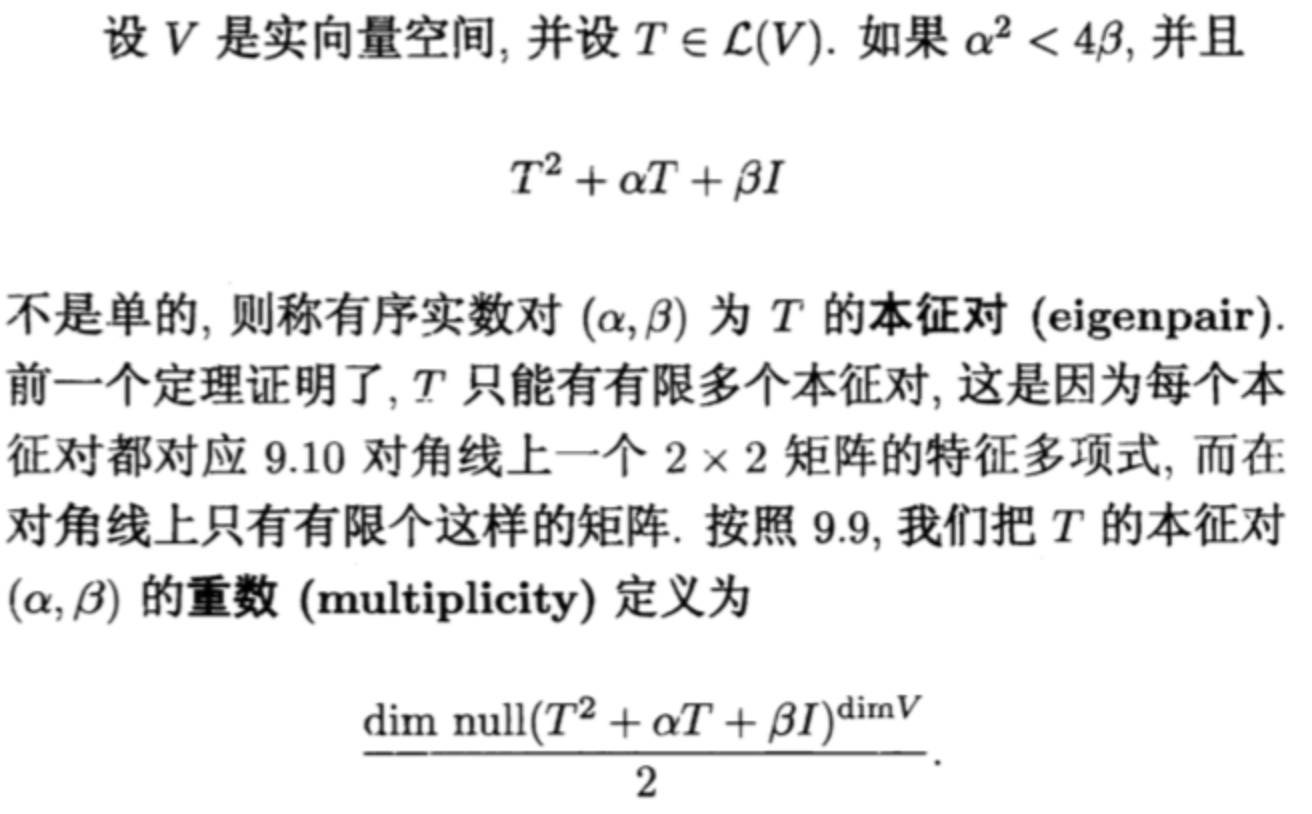
Theorm:
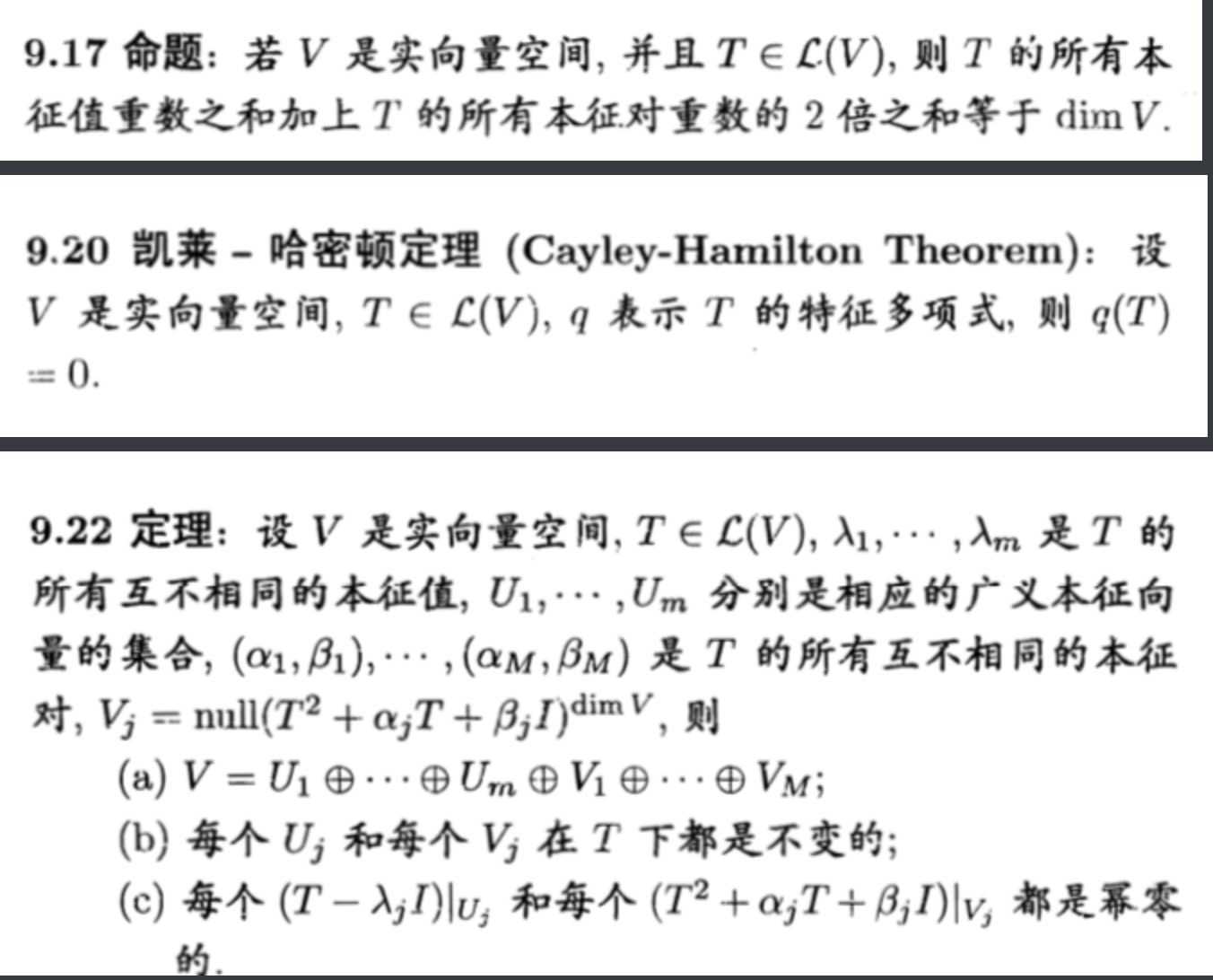
2.3.6. eigen decomposition (web)
Def: eigen decomposition

x1, x2 are orthogonal

decomposition, no proof

3. polynomial
Def: 多项式

3.1. root
Def: 次数

Def: root

Qua: necc & suff

Qua: => number of roots

Corollary:

Theorm: division algorithm

3.2. complex coefficient
Theorm: fundamental theorm of algebra

Corollary:

3.3. real coefficient
Theorm: => root

Lemma: to prove the below

Theorm: 分解定理
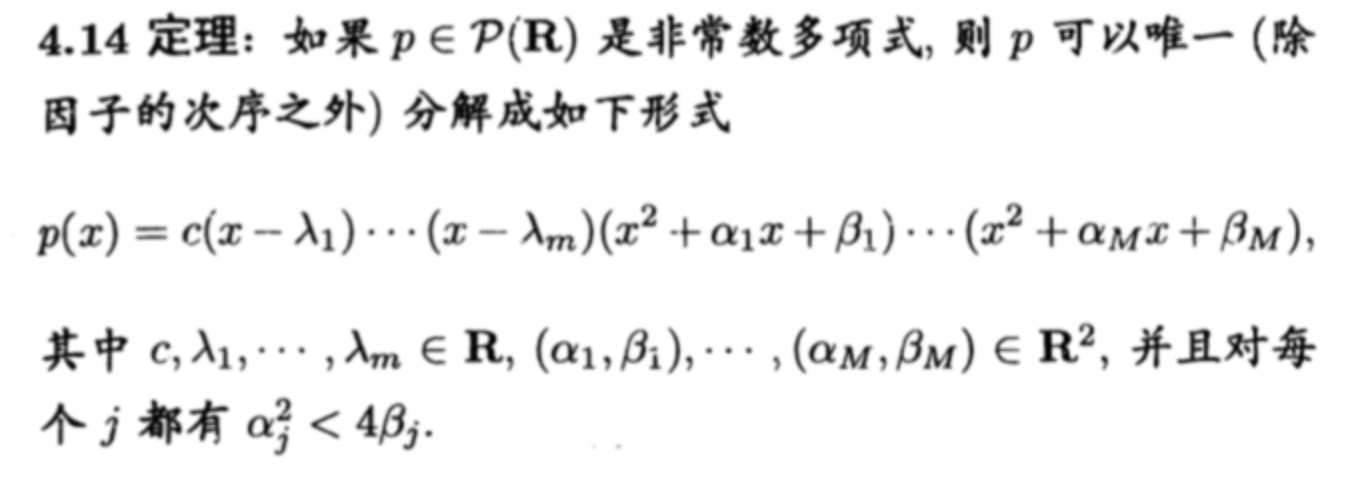
3.4. multi linear function
Def: 多项式算子
